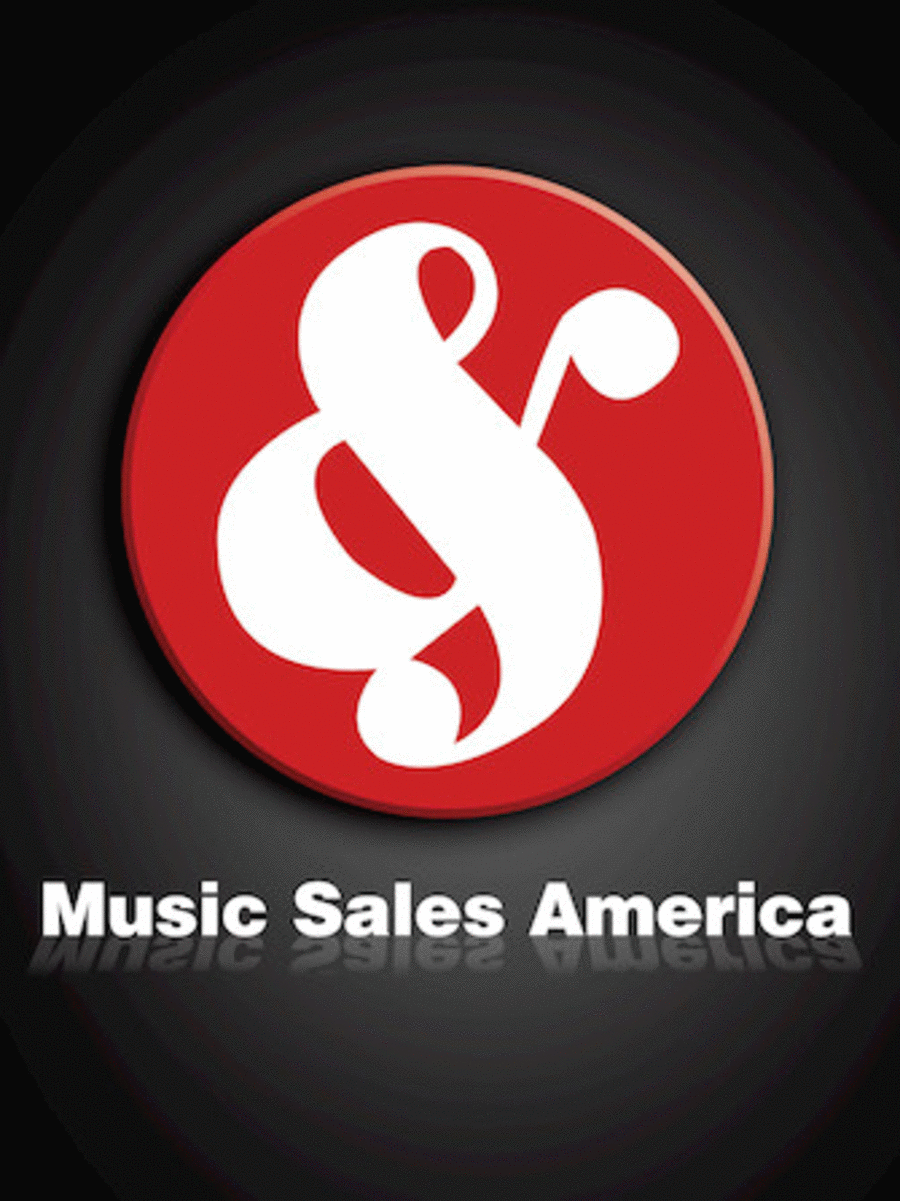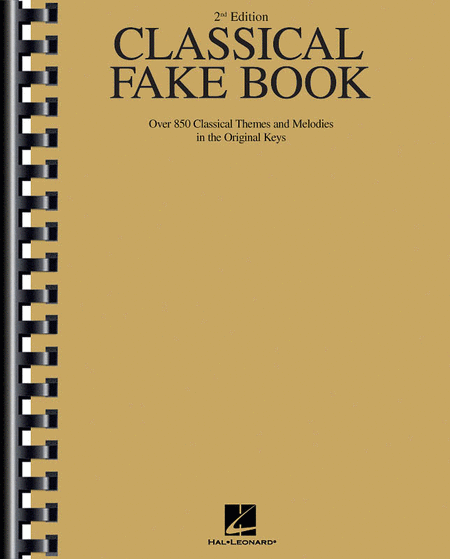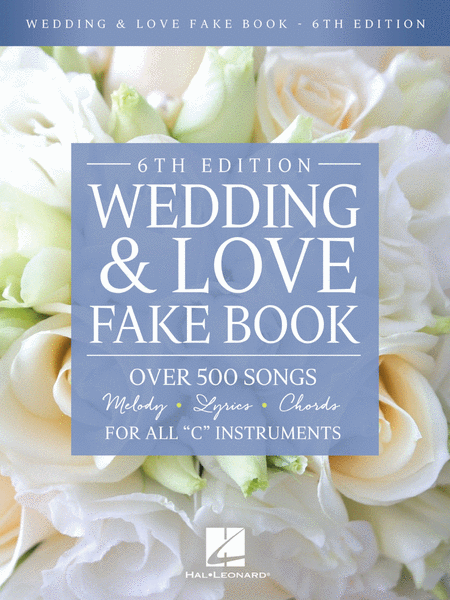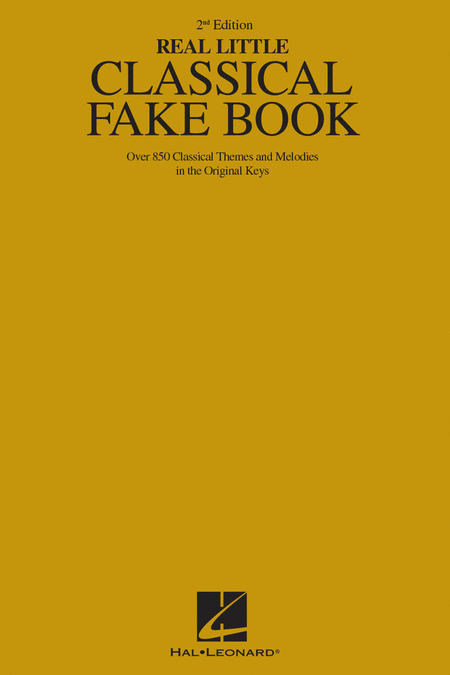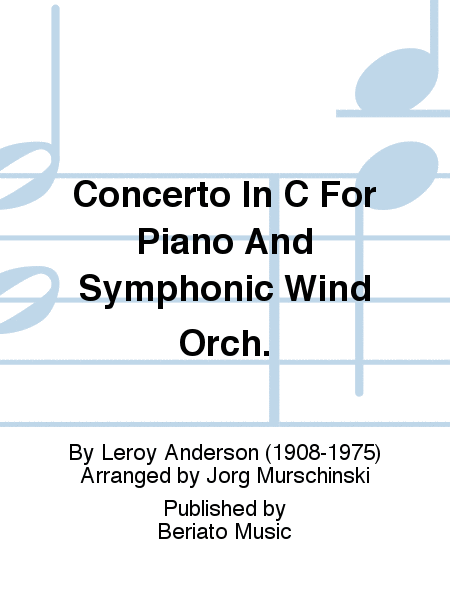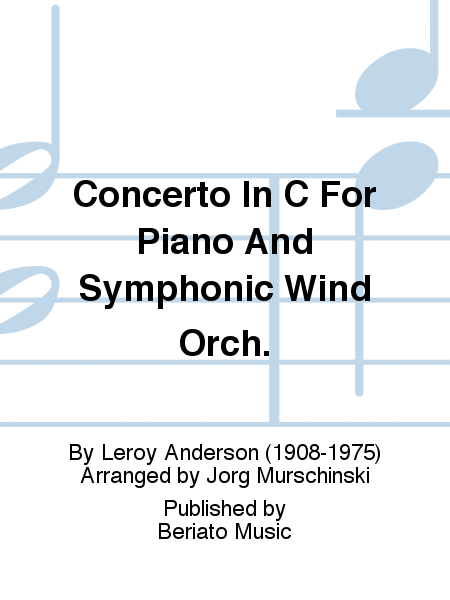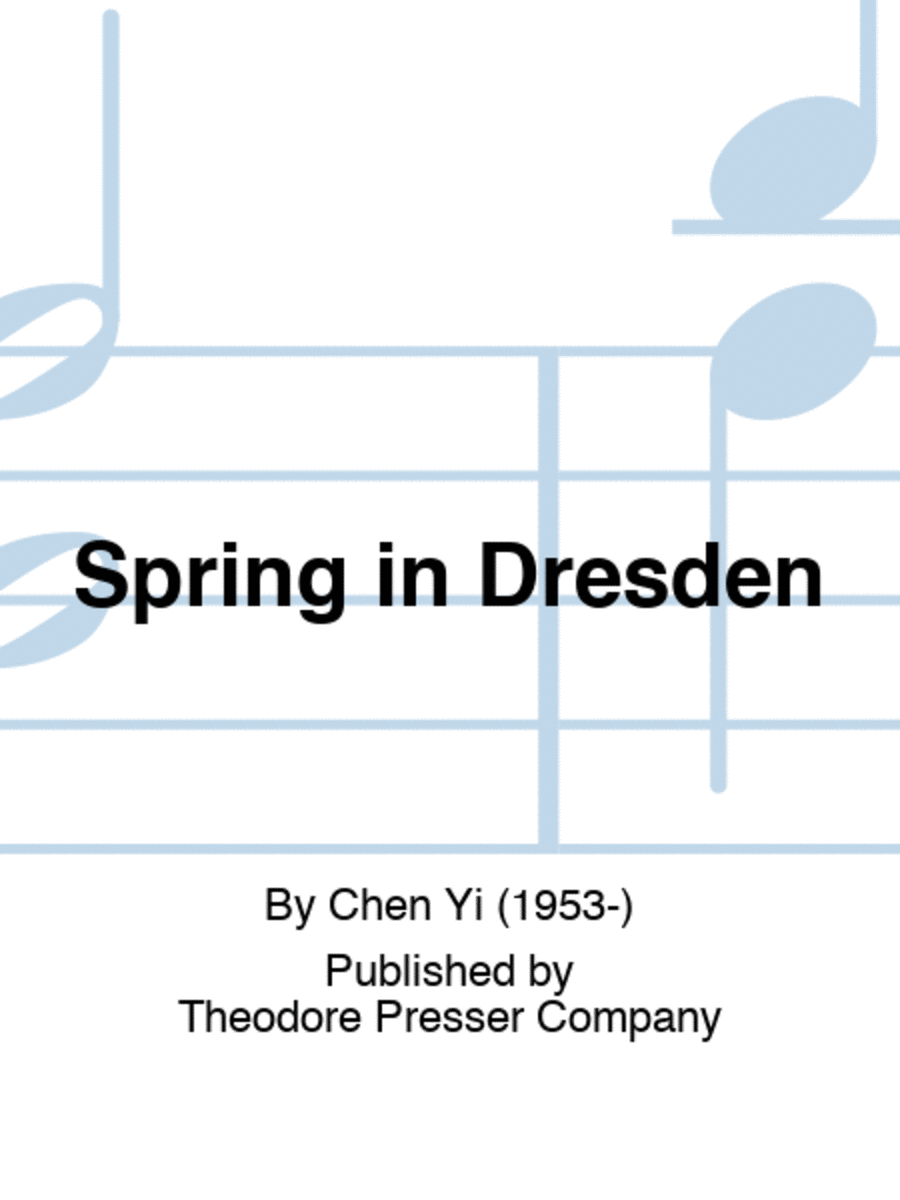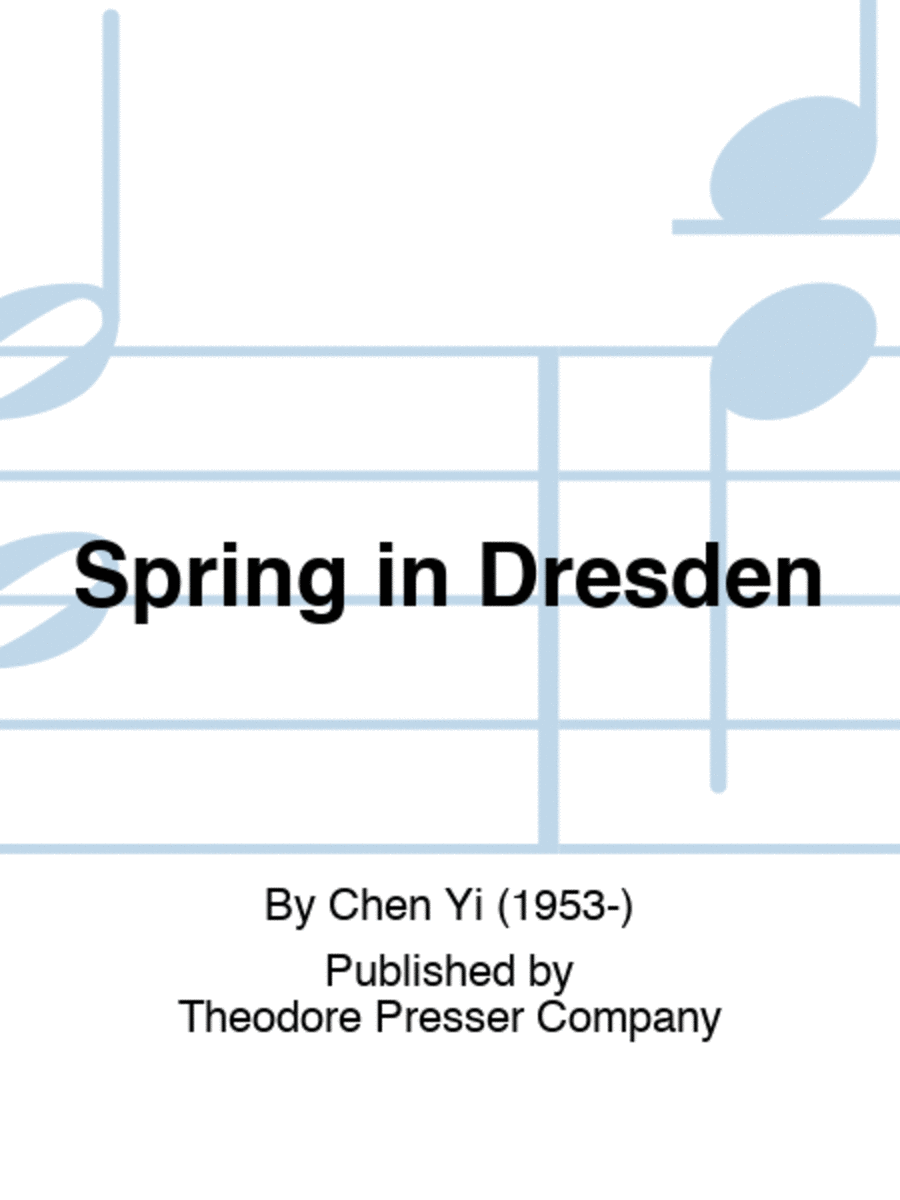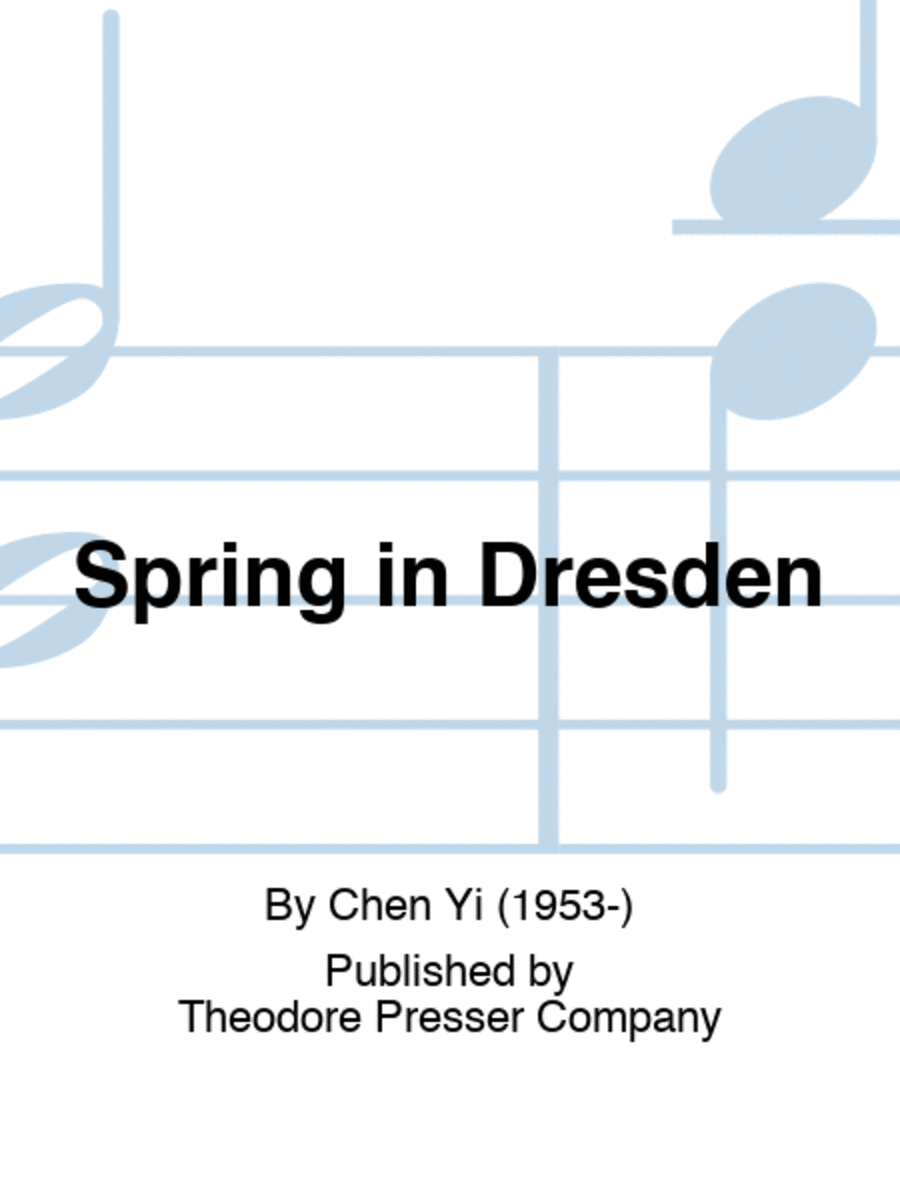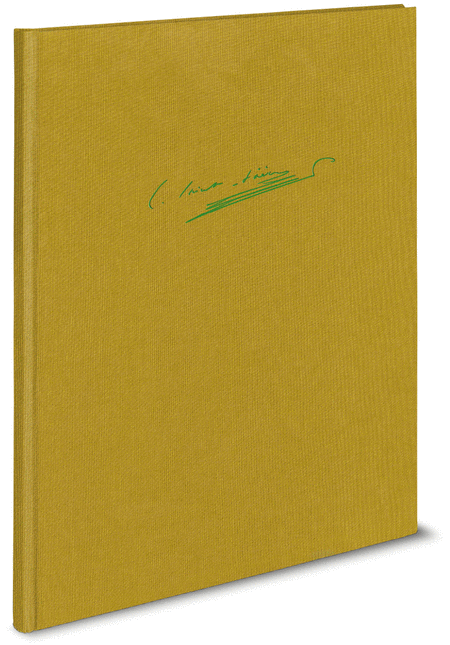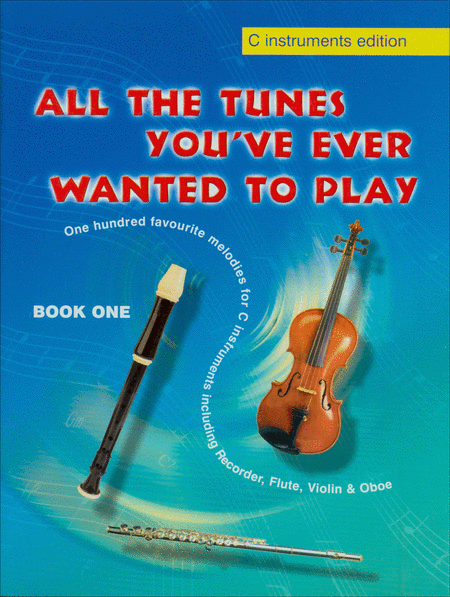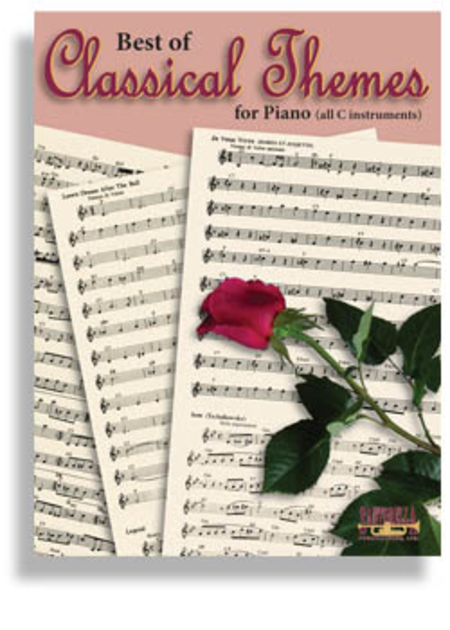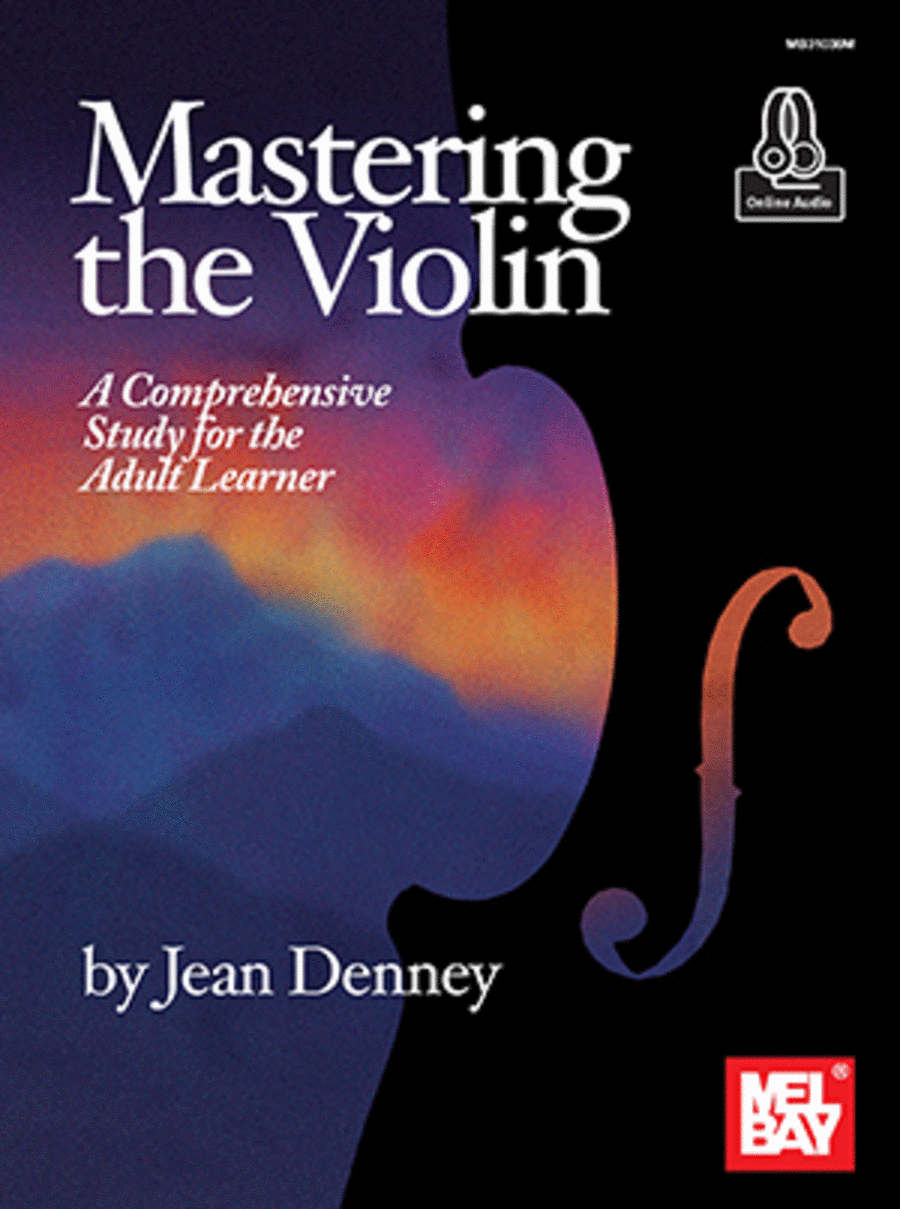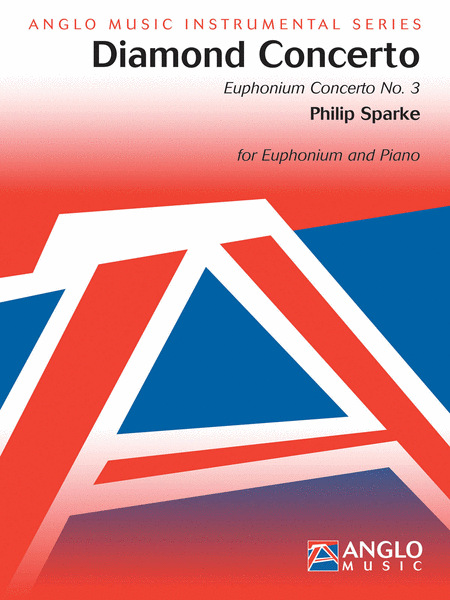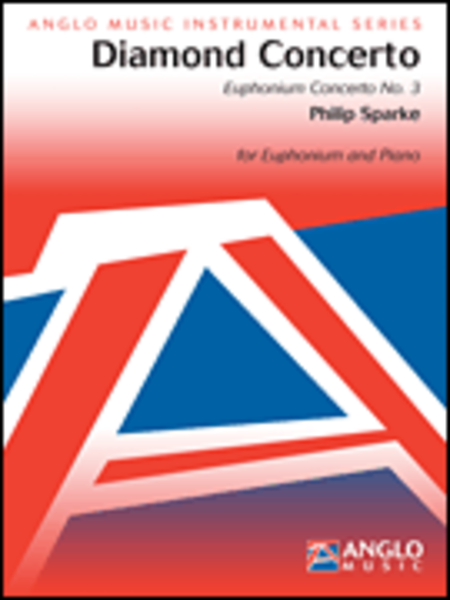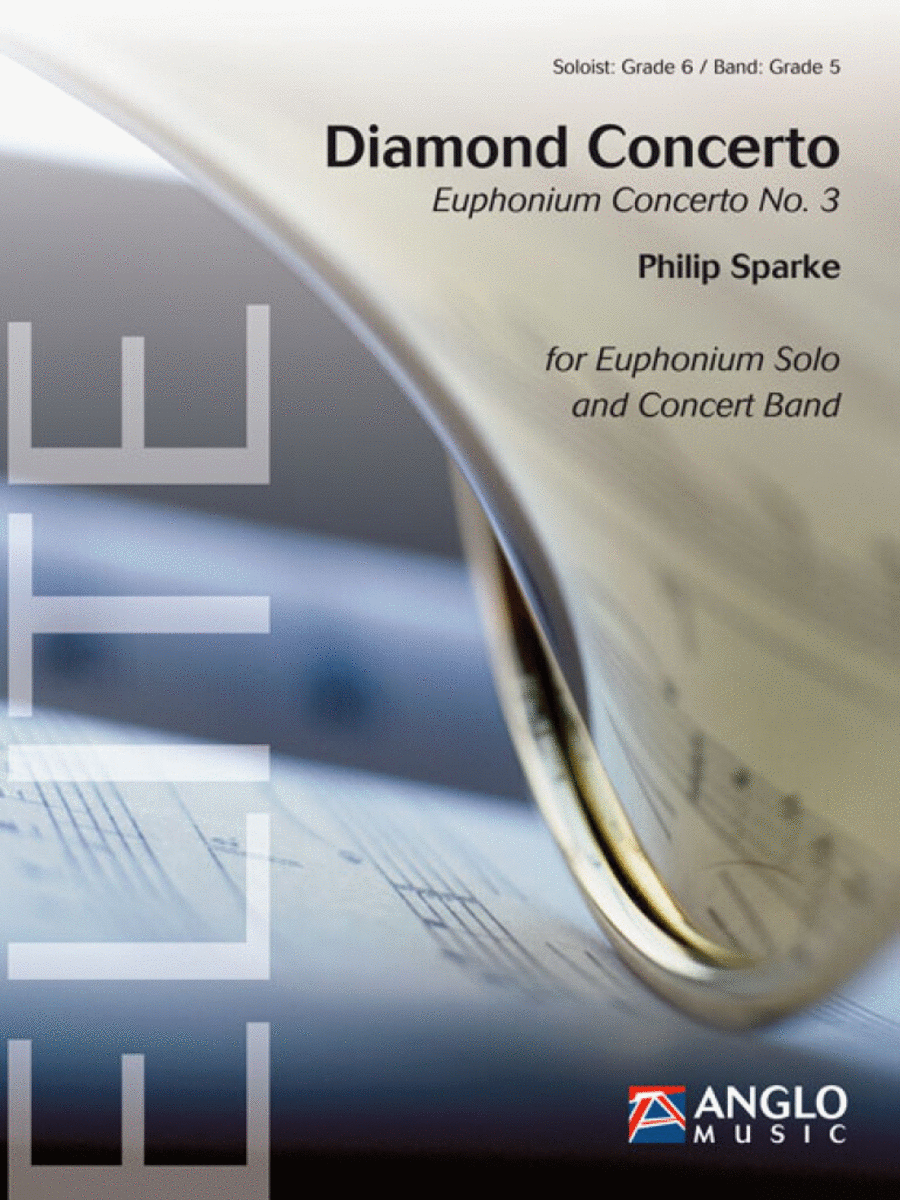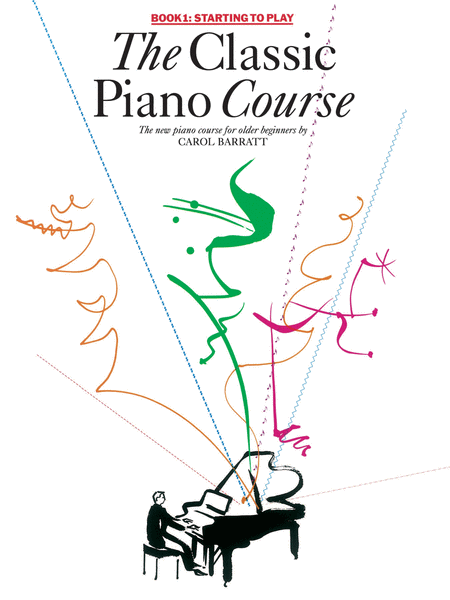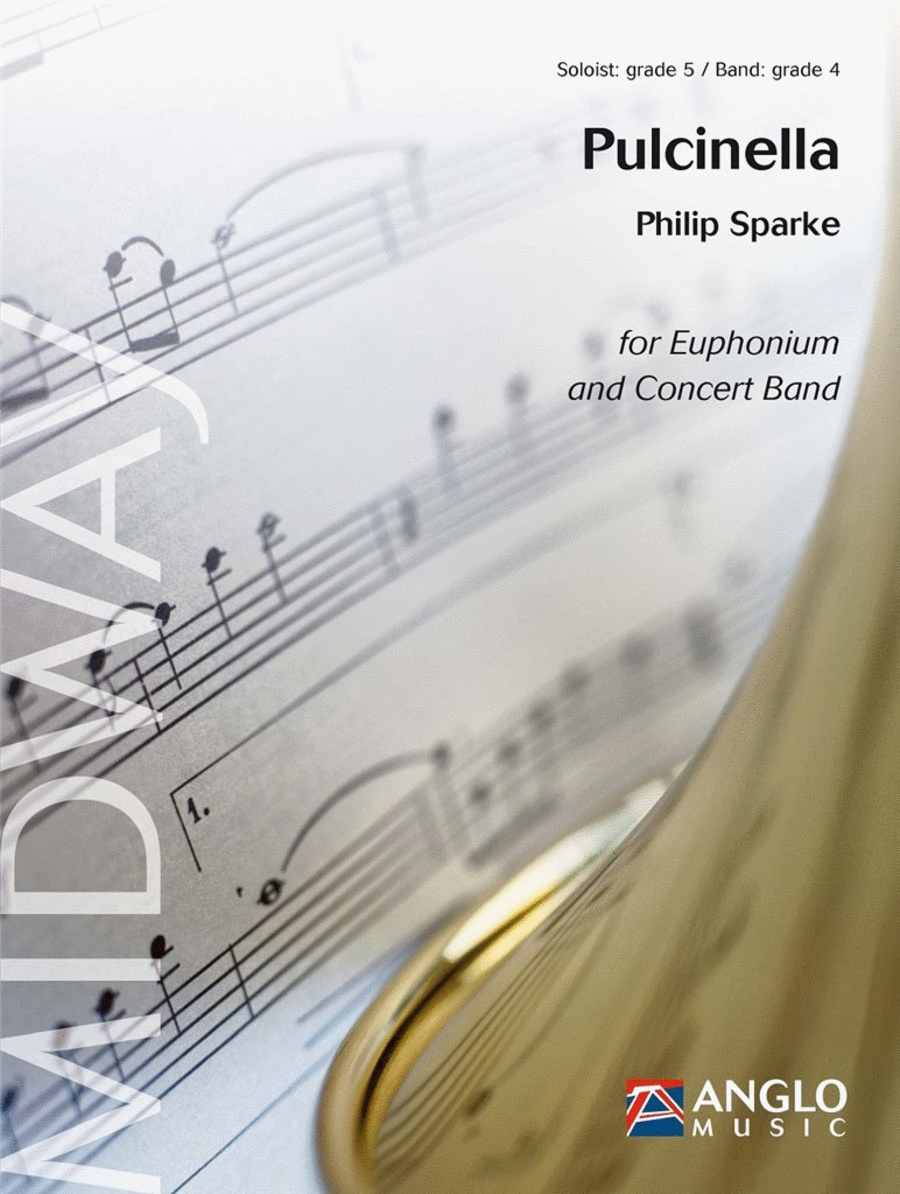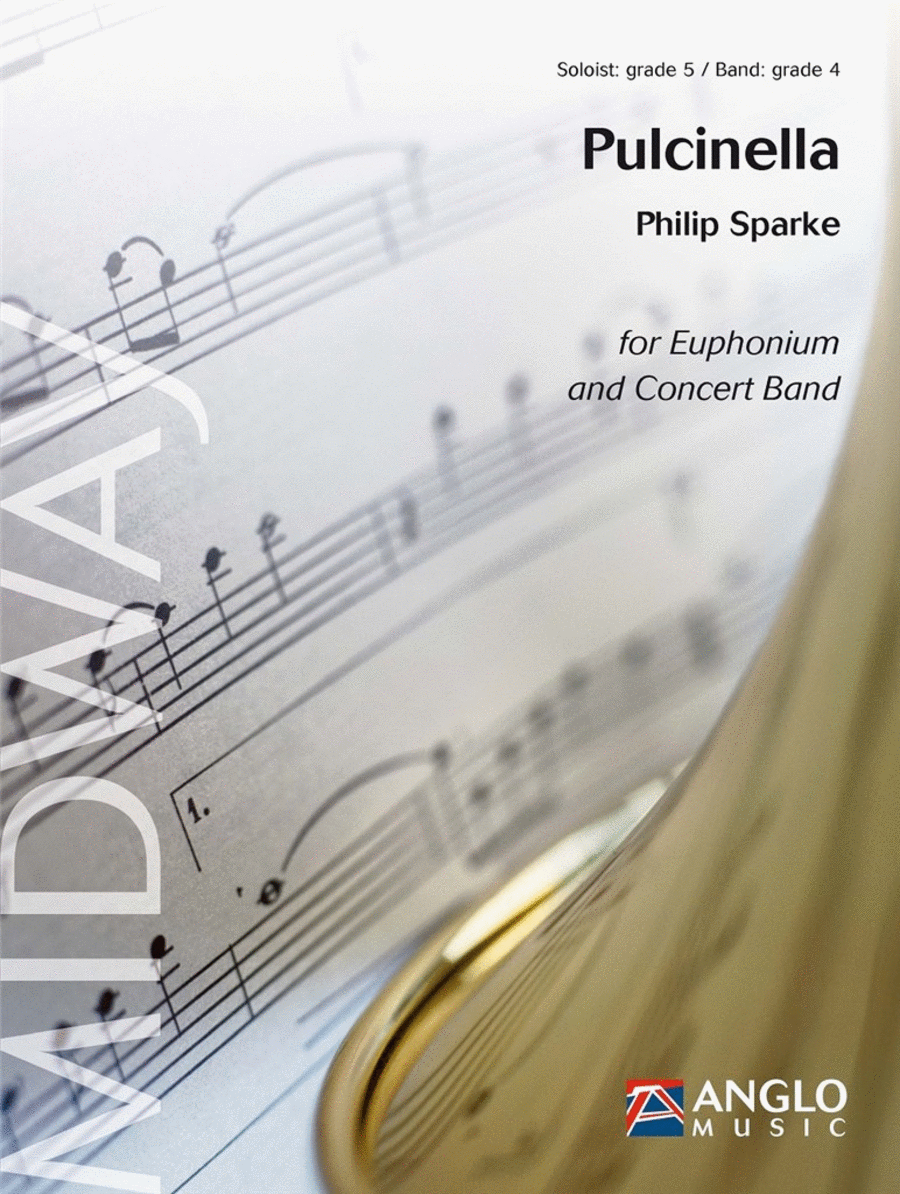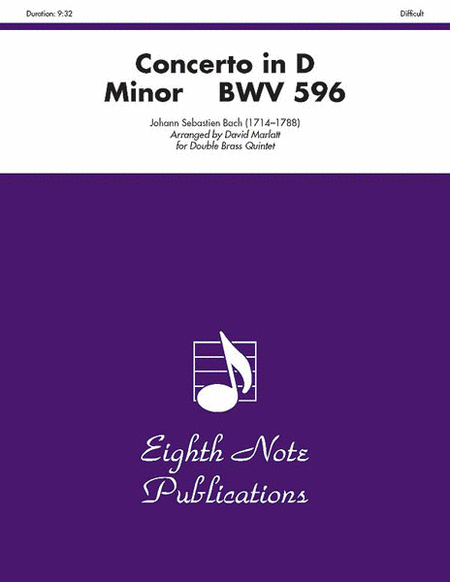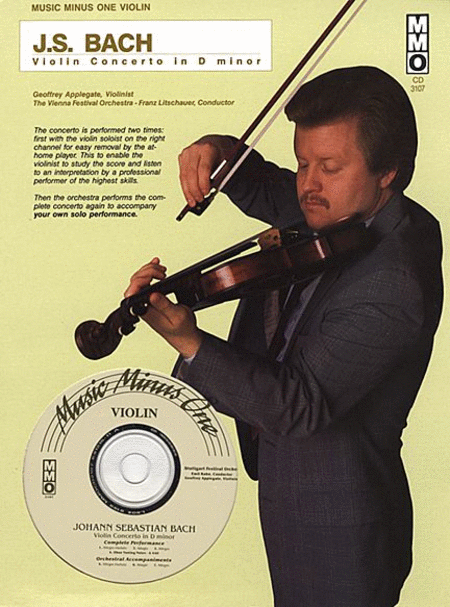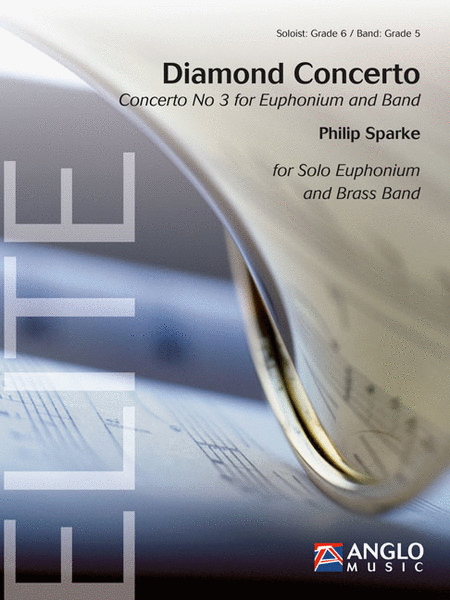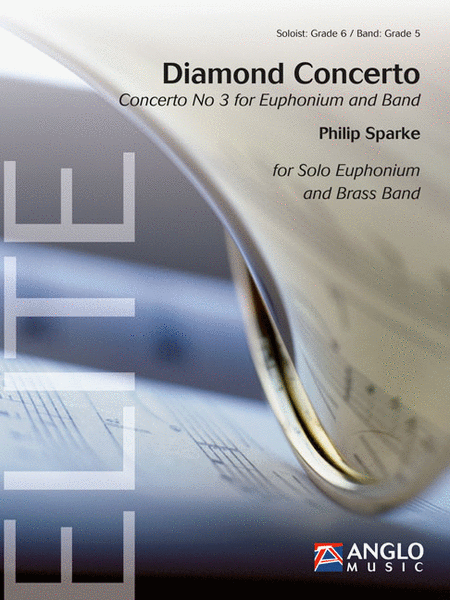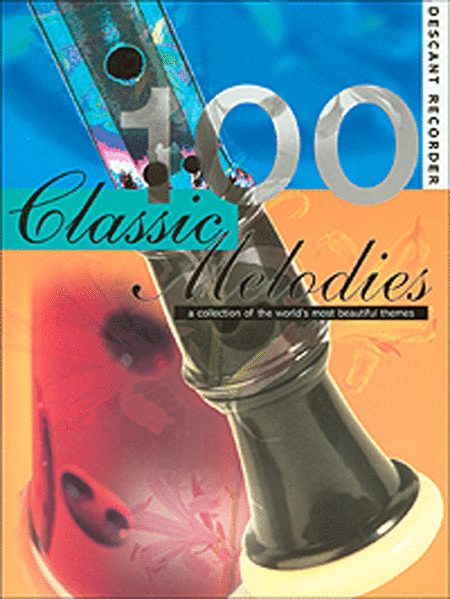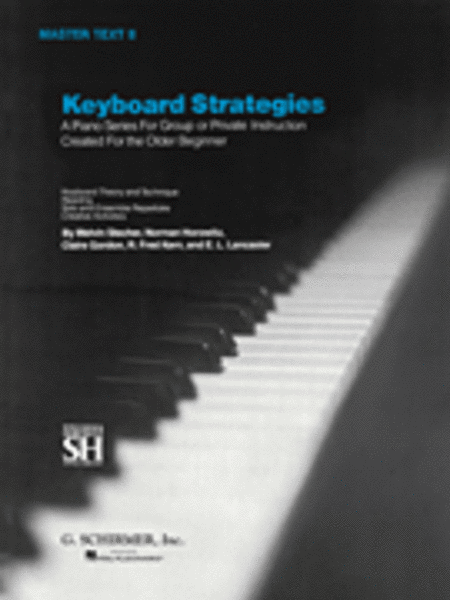|
| Buskers Fake Book All Time Hit
Piano seul
Music Sales
| | | |
| Classical Fake Book - 2nd Edition
Fake Book [Fake Book] - Facile
Hal Leonard
(Over 850 Classical Themes and Melodies in the Original Keys) For C instrument. ...(+)
(Over 850 Classical
Themes and Melodies in
the Original Keys) For C
instrument. Format:
fakebook (spiral bound).
With vocal melody
(excerpts) and chord
names. Lassical. Series:
Hal Leonard Fake Books.
646 pages. 9x12 inches.
Published by Hal Leonard.
(8)$49.99 - Voir plus => AcheterDélais: 24 hours - In Stock | | | |
| Wedding and Love Fake Book - 6th Edition
Instruments en Do
Hal Leonard
Over 500 Songs For All C Instruments. By Various. Fake Book. Love, Wedding. S...(+)
Over 500 Songs For All C
Instruments. By Various.
Fake Book. Love, Wedding.
Softcover. 456 pages.
Published by Hal Leonard
$35.00 - Voir plus => AcheterDélais: 24 hours - In Stock | | | |
| The Real Little Classical Fake Book - 2nd Edition
Piano seul - Intermédiaire
Hal Leonard
Composed by Various. For Piano/Keyboard. Hal Leonard Fake Books. Classical. Diff...(+)
Composed by Various. For
Piano/Keyboard. Hal
Leonard Fake Books.
Classical. Difficulty:
medium to
medium-difficult.
Fakebook. Melody line,
chord names and lyrics
(on some songs). 413
pages. Published by Hal
Leonard
$27.50 - Voir plus => AcheterDélais: 24 hours - In Stock | | | |
| Concerto In C For Piano And Symphonic Wind Orch.
Orchestre d'harmonie [Conducteur]
Beriato Music
Concert Band/Harmonie and Piano SKU: BT.BMP8095417 Composed by Leroy Ande...(+)
Concert Band/Harmonie and
Piano SKU:
BT.BMP8095417
Composed by Leroy
Anderson. Arranged by
Jörg Murschinski.
Score Only. Composed
2008. Beriato Music
#BMP8095417. Published by
Beriato Music
(BT.BMP8095417).
A lot is known
about the American
composer Leroy Anderson.
This son of Swedish
immigrants played the
piano, organ, accordion,
trombone, tuba and double
bass. He spoke several
languages fluently and
graduated from Harvard
with first-class
honours.While on military
service, the army also
commissioned him to write
a manual on Icelandic
grammar.He already
started writing musical
arrangements as a
student, and from his
30th year arranged and
composed for the Boston
Pops Orchestra. Such
melodiesas Serenata, The
Typewriter, Sleigh Ride
and Bugler�s
Holiday made him world
famous. His best-known
work, Blue Tango, reached
number one in the US
charts in 1952, and it
sold more than a million
copies. In 1975, a year
after hisdeath, he was
given a star at the Walk
of Fame in Hollywood.Most
of his works last no
longer than three
minutes, about the
maximum length of a
single at that time. One
work that lasts longer is
his 1953 Piano Concerto
in C for piano and
orchestra.The first
performance was in
Chicago, conducted by the
composer and with Eugene
List at the piano.
However, after three
performances he was no
longer happy with the
work and withdrew it. He
always intended to revise
it, but never got round
to it. Itwas only in 1989
that the Anderson family
decided to republish the
work.This three-part
composition is on the one
hand characterised by a
careless elegance, but on
the other one can hear
the influence of
Rachmaninoff, Copland,
Gershwin, and
evenBeethoven and Mozart,
as well as the Viennese
classics.Anderson used
the sonata form for the
first movement. It ends
with a cadenza that
carries us on into the
second part (in e minor).
The third part is a
typically cheerful
American folk dance in2/4
time, a so-called Hoe
Down, with a lilting,
lyrical passage as its
middle section. At the
end comes a solo passage
followed by a rapid
close.In this piano
concerto, Anderson
combines a rigidly
classical form of
composition with simple
andappealing themes and
elements from light
music. So this work is a
perfect synthesis of
light music and what is
called serious music, in
the same way as
Gershwin�s
Rhapsody in Blue. A work
that can be played
equally well in a
concerthall, at an
open-air concert or even
a pop
concert.
Over de
Amerikaanse componist
Leroy Anderson is veel
bekend. Deze zoon van
Zweedse immigranten
speelde piano, orgel,
accordeon, trombone, tuba
en contrabas. Hij sprak
vloeiend verschillende
talen en studeerde met
grote onderscheidingaf
aan Harvard en schreef
tijdens zijn legerdienst
in opdracht van het leger
een handboek grammatica
Ijslands.Al in zijn
studententijd begon hij
met het maken van
arrangementen, en vanaf
zijn 30ste arrangeerde en
componeerde hijvoor het
Boston Pops Orchestra.
Melodieën zoals
Serenata, The Typewriter,
Sleigh Ride en Bugler's
Holiday maakte hem
wereldberoemd. Zijn
bekendste werk Blue Tango
stond in 1952 op nummer
één in de VS
Charts, ener werden meer
dan een miljoen
exemplaren van verkocht.
Een jaar na zijn dood in
1975 kreeg hij een ster
op de Walk of Fame in
Hollywood.Zijn meeste
werken duren niet langer
dan drie minuten,
ongeveer de maximumduur
van een singletoen. Een
werk dat wel langer
duurt, is het
pianoconcerto in C voor
piano en orkest uit 1953.
Het werd in Chicago
gecreëerd onder zijn
leiding met Eugene List
aan de piano. Na drie
uitvoeringen echter, was
hij niet meer
tevredenover zijn werk en
trok dit terug. Hij had
zijn leven lang de
intentie het te herwerken
doch kwam er niet meer
toe. Pas in 1989 besliste
de Anderson Familie zijn
pianoconcerto toch
opnieuw uit te geven.Dit
driedelige werk
wordtenerzijds getypeerd
door een zorgeloze
elegantie, maar
anderzijds zijn invloeden
van Rachmaninoff,
Copland, Gerschwin en
zelfs Beethoven en Mozart
alsook de Weense
klassiekers te horen.Voor
de eerste beweging, past
Anderson de
sonatevormtoe. Op het
einde volgt een cadenza
die ons in het tweede
deel (in mi klein) voert.
Het derde deel is een
typische Amerikaanse,
vrolijke volksdans in
2/4, een zogenaamde Hoe
Down met als
middengedeelte een
zangerige,
lyrische
Ãœber
den amerikanischen
Komponisten Leroy
Anderson lässt sich
vieles berichten: Der
Sohn schwedischer
Immigranten spielte
Klavier, Orgel,
Akkordeon, Posaune, Tuba
und Kontrabass, sprach
neun Sprachen
fließend, absolvierte
mit
einemMagna-cum-laude-Absc
hluss die Harvard
Universität und
verfasste während
seiner Militärzeit im
Zweiten Weltkrieg für
die amerikanische Armee
eine Grammatik des
Isländischen. Schon
während seiner
Studentenzeit begann er
zu arrangieren, ab Mitte
der30er Jahre des letzten
Jahrhunderts arrangierte
und komponierte er für
das Boston Pops
Orchestra. Aus seiner
Feder stammen so bekannte
Werke der leichten Muse
wie Serenata, The
Typewriter, Sleigh Ride
oder Bugler�s
Holiday. Sein
wohlbekanntestes
Stück, Blue Tango,
wurde als erste
Instrumentalkomposition
über eine Million Mal
verkauft und belegte im
Jahr 1952 Platz 1 der
US-Charts. Für seine
Verdienste um die
Schallplattenindustrie
erhielt er ein Jahr nach
seinem Tod einenStern auf
dem Walk of Fame in
Hollywood.Charakteristisc
h für seine Werke ist
die Dauer: die meisten
sind rund drei Minuten
lang � mehr passte
nicht auf den damals
gebräuchlichen
Tonträger, eine
Singleschallplatte. Nur
wenige
seinerKompositionen
sprengen diesen
Zeitrahmen. Dazu
gehört sein Konzert
C-Dur für Klavier und
Orchester. Er komponierte
es 1953, die
Uraufführung fand
unter seiner Leitung und
mit Eugene List am
Klavier im selben Jahr in
Chicago statt. Da
Anderson mit demWerk aber
nicht zufrieden war, zog
er es im Sommer 1954,
nach nur drei
Aufführungen, wieder
ein. Er hatte zeitlebens
die Absicht, es zu
überarbeiten, allein,
es kam nicht mehr dazu.
Erst 1989 entschied sich
die Anderson-Familie
dazu, dasKlavierkonzert
wieder zu
veröffentlichen.Das
dreisätzige Werk zeigt
die Unbeschwertheit und
Eleganz, die Andersons
sämtliche
Kompositionen
auszeichnen. Dennoch
findet man darin auch
Anklänge an
Komponisten wie
Rachmaninoff, Copland,
Gershwin, undeben
Beethoven und Mozart,
sowie die Wiener
Klassiker. Der erste Satz
folgt der
Sonatenhauptsatzform. An
seinem Ende steht eine
Klavierkadenz, die direkt
in den langsamen zweiten
Satz (in e-Moll)
überleitet. Der dritte
Satz schließlich ist
einwaschechter Hoe Down,
ein fröhlicher
amerikanischer Volkstanz
im 2/4-Takt, in dessen
Zentrum aber eine
lyrisch-gesangliche
Passage steht. Eine
weitere Solo-Kadenz
führt das Werk in
einen spritzigen
Schlussabschnitt.In
seinem
Klavierkonzertvereinigt
Anderson einen
klassisch-traditionellen
Form- und
Kompositionsstil mit
Elementen der
Unterhaltungsmusik und
eingängigen Melodien,
die schon immer sein
Markenzeichen waren.
Daher bildet dieses Werk
eine perfekte Synthese
von ernster undleichter
Musik. Es passt �
wie beispielsweise auch
George Gershwins Rhapsody
in Blue �
gleichermaßen in einen
vornehmen Konzertsaal,
wie auch zur
zwanglos-lockeren
Atmosphäre einer
sommerlichen
Open-Air-Veranstaltung
oder
einesPops-Konzertes.
<
br>Nous savons beaucoup
de choses sur le
compositeur américain
Leroy Anderson. Ce fils
dimmigrants suédois
jouait du piano, de
lorgue, de laccordéon,
du trombone, du tuba et
de la contrebasse. Il
parlait couramment
plusieurs langues et
était diplômé
avec grande distinction
de Harvard. Pendant son
service militaire, il
écrivit un manuel de
grammaire islandaise
commandé par
larmée.Étudiant,
il avait déj
commencé faire des
arrangements et dès l
ge de 30 ans, il
arrangeait et composait
pour le Boston Pops
Orchestra. Des
mélodies telles que
Serenata, The Typewriter,
Sleigh Ride et Buglers
Holiday lui valurent une
renommée mondiale. Son
uvre phare, Blue Tango,
fut numéro un
descharts américains
en 1952 et se vendit plus
dun million dexemplaires.
Un an après sa mort en
1975, il eut droit son
étoile sur le Walk of
Fame Hollywood.La plupart
de ses uvres nexcèdent
pas trois minutes, soit
peu près la durée
maximale dun single
lépoque. Son concerto
en ut pour piano et
orchestre de 1953 est
quant lui plus long. Il
fut créé Chicago
sous sa direction avec
Eugene List au piano.
Après trois
exécutions, Anderson
nétait toutefois plus
satisfait de son travail
et le retira. Toute sa
vie, il eut lintention de
le remanier mais ne le
fit pas. Ce nest quen
1989 que la famille
Anderson décida de
tout de m?me
rééditer son
concerto pour piano.Cette
uvre en trois parties se
caractérise par son
élégance
nonchalante mais aussi
par linfluence de
Rachmaninoff, Copland,
Gershwin et m?me de
Beethoven et Mozart,
ainsi que des classiques
viennois.Pour le premier
mouvement, Anderson opte
pour une sonate. la fin,
une cadence nous conduit
la deuxième partie (en
mi mineur). La
troisième partie est
une danse populaire
joyeuse et typiquement
américaine en 2/4, une
Hoe Down avec un passage
lyrique et mélodieux
en son milieu. la fin, un
solo est suivi par une
clôture rapide.Dans
son concerto pour piano,
Anderson unit une
composition pure et
classique des thèmes
beaux et simples, sans
oublier des
éléments de la
musique légère.
Cette uvre. $38.95 - Voir plus => AcheterDélais: 4 to 6 weeks | | | |
| Concerto In C For Piano And Symphonic Wind Orch.
Orchestre d'harmonie [Conducteur et Parties séparées]
Beriato Music
Concert Band/Harmonie and Piano SKU: BT.BMP8091417 Composed by Leroy Ande...(+)
Concert Band/Harmonie and
Piano SKU:
BT.BMP8091417
Composed by Leroy
Anderson. Arranged by
Jörg Murschinski. Set
(Score & Parts). Composed
2008. Beriato Music
#BMP8091417. Published by
Beriato Music
(BT.BMP8091417).
A lot is known
about the American
composer Leroy Anderson.
This son of Swedish
immigrants played the
piano, organ, accordion,
trombone, tuba and double
bass. He spoke several
languages fluently and
graduated from Harvard
with first-class
honours.While on military
service, the army also
commissioned him to write
a manual on Icelandic
grammar.He already
started writing musical
arrangements as a
student, and from his
30th year arranged and
composed for the Boston
Pops Orchestra. Such
melodiesas Serenata, The
Typewriter, Sleigh Ride
and Bugler�s
Holiday made him world
famous. His best-known
work, Blue Tango, reached
number one in the US
charts in 1952, and it
sold more than a million
copies. In 1975, a year
after hisdeath, he was
given a star at the Walk
of Fame in Hollywood.Most
of his works last no
longer than three
minutes, about the
maximum length of a
single at that time. One
work that lasts longer is
his 1953 Piano Concerto
in C for piano and
orchestra.The first
performance was in
Chicago, conducted by the
composer and with Eugene
List at the piano.
However, after three
performances he was no
longer happy with the
work and withdrew it. He
always intended to revise
it, but never got round
to it. Itwas only in 1989
that the Anderson family
decided to republish the
work.This three-part
composition is on the one
hand characterised by a
careless elegance, but on
the other one can hear
the influence of
Rachmaninoff, Copland,
Gershwin, and
evenBeethoven and Mozart,
as well as the Viennese
classics.Anderson used
the sonata form for the
first movement. It ends
with a cadenza that
carries us on into the
second part (in e minor).
The third part is a
typically cheerful
American folk dance in2/4
time, a so-called Hoe
Down, with a lilting,
lyrical passage as its
middle section. At the
end comes a solo passage
followed by a rapid
close.In this piano
concerto, Anderson
combines a rigidly
classical form of
composition with simple
andappealing themes and
elements from light
music. So this work is a
perfect synthesis of
light music and what is
called serious music, in
the same way as
Gershwin�s
Rhapsody in Blue. A work
that can be played
equally well in a
concerthall, at an
open-air concert or even
a pop
concert.
Over de
Amerikaanse componist
Leroy Anderson is veel
bekend. Deze zoon van
Zweedse immigranten
speelde piano, orgel,
accordeon, trombone, tuba
en contrabas. Hij sprak
vloeiend verschillende
talen en studeerde met
grote onderscheidingaf
aan Harvard en schreef
tijdens zijn legerdienst
in opdracht van het leger
een handboek grammatica
Ijslands.Al in zijn
studententijd begon hij
met het maken van
arrangementen, en vanaf
zijn 30ste arrangeerde en
componeerde hijvoor het
Boston Pops Orchestra.
Melodieën zoals
Serenata, The Typewriter,
Sleigh Ride en Bugler's
Holiday maakte hem
wereldberoemd. Zijn
bekendste werk Blue Tango
stond in 1952 op nummer
één in de VS
Charts, ener werden meer
dan een miljoen
exemplaren van verkocht.
Een jaar na zijn dood in
1975 kreeg hij een ster
op de Walk of Fame in
Hollywood.Zijn meeste
werken duren niet langer
dan drie minuten,
ongeveer de maximumduur
van een singletoen. Een
werk dat wel langer
duurt, is het
pianoconcerto in C voor
piano en orkest uit 1953.
Het werd in Chicago
gecreëerd onder zijn
leiding met Eugene List
aan de piano. Na drie
uitvoeringen echter, was
hij niet meer
tevredenover zijn werk en
trok dit terug. Hij had
zijn leven lang de
intentie het te herwerken
doch kwam er niet meer
toe. Pas in 1989 besliste
de Anderson Familie zijn
pianoconcerto toch
opnieuw uit te geven.Dit
driedelige werk
wordtenerzijds getypeerd
door een zorgeloze
elegantie, maar
anderzijds zijn invloeden
van Rachmaninoff,
Copland, Gerschwin en
zelfs Beethoven en Mozart
alsook de Weense
klassiekers te horen.Voor
de eerste beweging, past
Anderson de
sonatevormtoe. Op het
einde volgt een cadenza
die ons in het tweede
deel (in mi klein) voert.
Het derde deel is een
typische Amerikaanse,
vrolijke volksdans in
2/4, een zogenaamde Hoe
Down met als
middengedeelte een
zangerige,
lyrische
Ãœber
den amerikanischen
Komponisten Leroy
Anderson lässt sich
vieles berichten: Der
Sohn schwedischer
Immigranten spielte
Klavier, Orgel,
Akkordeon, Posaune, Tuba
und Kontrabass, sprach
neun Sprachen
fließend, absolvierte
mit
einemMagna-cum-laude-Absc
hluss die Harvard
Universität und
verfasste während
seiner Militärzeit im
Zweiten Weltkrieg für
die amerikanische Armee
eine Grammatik des
Isländischen. Schon
während seiner
Studentenzeit begann er
zu arrangieren, ab Mitte
der30er Jahre des letzten
Jahrhunderts arrangierte
und komponierte er für
das Boston Pops
Orchestra. Aus seiner
Feder stammen so bekannte
Werke der leichten Muse
wie Serenata, The
Typewriter, Sleigh Ride
oder Bugler�s
Holiday. Sein
wohlbekanntestes
Stück, Blue Tango,
wurde als erste
Instrumentalkomposition
über eine Million Mal
verkauft und belegte im
Jahr 1952 Platz 1 der
US-Charts. Für seine
Verdienste um die
Schallplattenindustrie
erhielt er ein Jahr nach
seinem Tod einenStern auf
dem Walk of Fame in
Hollywood.Charakteristisc
h für seine Werke ist
die Dauer: die meisten
sind rund drei Minuten
lang � mehr passte
nicht auf den damals
gebräuchlichen
Tonträger, eine
Singleschallplatte. Nur
wenige
seinerKompositionen
sprengen diesen
Zeitrahmen. Dazu
gehört sein Konzert
C-Dur für Klavier und
Orchester. Er komponierte
es 1953, die
Uraufführung fand
unter seiner Leitung und
mit Eugene List am
Klavier im selben Jahr in
Chicago statt. Da
Anderson mit demWerk aber
nicht zufrieden war, zog
er es im Sommer 1954,
nach nur drei
Aufführungen, wieder
ein. Er hatte zeitlebens
die Absicht, es zu
überarbeiten, allein,
es kam nicht mehr dazu.
Erst 1989 entschied sich
die Anderson-Familie
dazu, dasKlavierkonzert
wieder zu
veröffentlichen.Das
dreisätzige Werk zeigt
die Unbeschwertheit und
Eleganz, die Andersons
sämtliche
Kompositionen
auszeichnen. Dennoch
findet man darin auch
Anklänge an
Komponisten wie
Rachmaninoff, Copland,
Gershwin, undeben
Beethoven und Mozart,
sowie die Wiener
Klassiker. Der erste Satz
folgt der
Sonatenhauptsatzform. An
seinem Ende steht eine
Klavierkadenz, die direkt
in den langsamen zweiten
Satz (in e-Moll)
überleitet. Der dritte
Satz schließlich ist
einwaschechter Hoe Down,
ein fröhlicher
amerikanischer Volkstanz
im 2/4-Takt, in dessen
Zentrum aber eine
lyrisch-gesangliche
Passage steht. Eine
weitere Solo-Kadenz
führt das Werk in
einen spritzigen
Schlussabschnitt.In
seinem
Klavierkonzertvereinigt
Anderson einen
klassisch-traditionellen
Form- und
Kompositionsstil mit
Elementen der
Unterhaltungsmusik und
eingängigen Melodien,
die schon immer sein
Markenzeichen waren.
Daher bildet dieses Werk
eine perfekte Synthese
von ernster undleichter
Musik. Es passt �
wie beispielsweise auch
George Gershwins Rhapsody
in Blue �
gleichermaßen in einen
vornehmen Konzertsaal,
wie auch zur
zwanglos-lockeren
Atmosphäre einer
sommerlichen
Open-Air-Veranstaltung
oder
einesPops-Konzertes.
<
br>Nous savons beaucoup
de choses sur le
compositeur américain
Leroy Anderson. Ce fils
dimmigrants suédois
jouait du piano, de
lorgue, de laccordéon,
du trombone, du tuba et
de la contrebasse. Il
parlait couramment
plusieurs langues et
était diplômé
avec grande distinction
de Harvard. Pendant son
service militaire, il
écrivit un manuel de
grammaire islandaise
commandé par
larmée.Étudiant,
il avait déj
commencé faire des
arrangements et dès l
ge de 30 ans, il
arrangeait et composait
pour le Boston Pops
Orchestra. Des
mélodies telles que
Serenata, The Typewriter,
Sleigh Ride et Buglers
Holiday lui valurent une
renommée mondiale. Son
uvre phare, Blue Tango,
fut numéro un
descharts américains
en 1952 et se vendit plus
dun million dexemplaires.
Un an après sa mort en
1975, il eut droit son
étoile sur le Walk of
Fame Hollywood.La plupart
de ses uvres nexcèdent
pas trois minutes, soit
peu près la durée
maximale dun single
lépoque. Son concerto
en ut pour piano et
orchestre de 1953 est
quant lui plus long. Il
fut créé Chicago
sous sa direction avec
Eugene List au piano.
Après trois
exécutions, Anderson
nétait toutefois plus
satisfait de son travail
et le retira. Toute sa
vie, il eut lintention de
le remanier mais ne le
fit pas. Ce nest quen
1989 que la famille
Anderson décida de
tout de m?me
rééditer son
concerto pour piano.Cette
uvre en trois parties se
caractérise par son
élégance
nonchalante mais aussi
par linfluence de
Rachmaninoff, Copland,
Gershwin et m?me de
Beethoven et Mozart,
ainsi que des classiques
viennois.Pour le premier
mouvement, Anderson opte
pour une sonate. la fin,
une cadence nous conduit
la deuxième partie (en
mi mineur). La
troisième partie est
une danse populaire
joyeuse et typiquement
américaine en 2/4, une
Hoe Down avec un passage
lyrique et mélodieux
en son milieu. la fin, un
solo est suivi par une
clôture rapide.Dans
son concerto pour piano,
Anderson unit une
composition pure et
classique des thèmes
beaux et simples, sans
oublier des
éléments de la
musique légère.
Cette uvre. $361.95 - Voir plus => AcheterDélais: 2 to 3 weeks | | | |
| Spring in Dresden [Conducteur]
Theodore Presser Co.
Orchestra Bass Drum, Bassoon 1, Bassoon 2, Clarinet 1, Clarinet 2, Contrabass, F...(+)
Orchestra Bass Drum,
Bassoon 1, Bassoon 2,
Clarinet 1, Clarinet 2,
Contrabass, Flute 1,
Flute 2, Harp, Horn 1,
Horn 2, Horn 3, Horn 4,
Marimba, Oboe 1, Oboe 2,
Percussion 1, Percussion
2, Percussion 3, Snare
Drum, Suspended Cymbal,
Tam-tam, Trombone 1 and
more. SKU:
PR.11641963S Composed
by Chen Yi. Full score.
58 pages. Duration 20
minutes. Theodore Presser
Company #116-41963S.
Published by Theodore
Presser Company
(PR.11641963S). UPC:
680160684472. The
violin concerto is
commissioned by Friends
of Dresden Music
Foundation for American
soloist Mira Wang and the
New York Philharmonic and
Staatskapelle Dresden as
an American commemoration
of the reconstruction of
the Dresden Frauenkirche,
60 years after its
destruction in World War
II by American and
British Forces. The world
premiere is given at the
Semperoper in Dresden,
Germany, on October 9, 10
& 11, 2005, conducted
by Ivan Fischer. Full of
excitement and inner
power, the musical image
is vivid, energetic,
sometimes lyrical and
sometimes dramatic. The
major angular thematic
material (a three note
motive) consists of big
leaps in interval (a
perfect fourth downward
and then a minor seventh
upward, first introduced
by the violin solo in
measures 27-29). Except
for the cadenzas which
stand at the middle
(Rehearsal E, measure
127) and the two ends of
the piece as a frame, the
virtuosic violin solo
line is always
accompanied by the ever
moving and growing
textures in the
background. The rests
between long and short
phrases symbolize the
space in Chinese
paintings. The Beijing
Opera reciting tune, and
the fingerings to produce
sliding tones in the
performance of the
Chinese fiddle erhu are
also borrowed in the
writing and the
performing of the western
instruments. The musical
imagination of the violin
concerto came from an
ancient Chinese poem with
the same title, written
by Du Fu (712-770) in
Tang Dynasty. Happy Rain
on a Spring Night by Du
Fu (712-770 in Tang
Dynasty) Happy rain comes
in time, When spring is
in its prime. With night
breeze it will fall, And
quietly moisten all.
Clouds darken wild roads,
Light brightens a little
boat. Saturated at dawn,
With flowers blooming the
town. (English
translation by Chen Yi
from the original poem in
Chinese) The following is
the poem in its original
Chinese form, and the
detailed introduction on
the structural plan of
the violin concerto
Spring in Dresden. It's
like the welcome rain on
a quiet spring night that
nurtures the budding
seeds, our new society is
pushing us forward to the
new future. The music
reflects the scenes and
the expression according
to the meaning of the
poem when it's being
unfolded line by line.
Although the tempo is set
63 quarter notes per
minute throughout (played
vividly, never slow
down), the tension is
being built up from the
quiet background in the
beginning, to the
sustained climax towards
the end. The musical
image in Rehearsal A and
B (measures 39-80)
represents the first four
lines of the poem. The
wind instruments response
to the rustling of fast
moving notes on muted
string triplets,
decorated by occasional
strokes produced by
metallic string sound and
high woodwind gestures.
The music in Rehearsal C
and D (measures 81-126)
represents the next two
lines of the poem. It's
so dark, a little light
in the boat is shimmering
on the lake... The
breathy sound and key
slaps on the flutes
create a mysterious
atmosphere, in a dialogue
with other instruments.
The cello glissandi
recite the poem in the
tone of Mandarin, echoed
by the string harmonics.
The music in Rehearsal F,
G and H (m 129-202) is a
toccata, starting in the
orchestra (led by the
marimba), which builds up
a big shape, to reach the
climax in m. 157
(Rehearsal G, the
location of the Golden
Section, according to the
length of the music
without cadenzas), and
keeps the vivid scene
towards the coda (from
Rehearsal I, m. 203),
which stands on the
energetic peak until the
clear cutoff on measure
239, followed by the
short, yet powerful solo
conclusion with the
lingering echo produced
by the high string
harmonics. On the top,
there is a recall of the
three note motive in the
sound of wonderland,
touched by the motor-on
vibraphone meaningfully.
The music is written for
2 flutes, 2 oboes, 2
clarinets (in Bb), 2
bassoons, 4 French horns
(in F), 2 trumpets (in
Bb), 3 trombones, tuba,
harp, 3 percussion
players (Perc. 1:
xylophone; Perc. 2:
suspended cymbal,
Japanese high woodblock,
snare drum, bass drum and
vibraphone; Perc. 3:
marimba and tam-tam),
solo violin, and strings.
Duration is about 20
minutes.
The violin
concerto is commissioned
by Friends of Dresden
Music Foundation for
American soloist Mira
Wang and the New York
Philharmonic and
Staatskapelle Dresden as
an American commemoration
of the reconstruction of
the Dresden Frauenkirche,
60 years after its
destruction in World War
II by American and
British Forces. The world
premiere is given at the
Semperoper in Dresden,
Germany, on October 9, 10
& 11, 2005, conducted by
Ivan Fischer.Full of
excitement and inner
power, the musical image
is vivid, energetic,
sometimeslyrical and
sometimes dramatic. The
major angular thematic
material (a three
notemotive) consists of
big leaps in interval (a
perfect fourth downward
and then a minorseventh
upward, first introduced
by the violin solo in
measures 27-29). Except
for thecadenzas which
stand at the middle
(Rehearsal E, measure
127) and the two ends of
the piece as a frame, the
virtuosic violin solo
line is always
accompanied by the ever
moving and growing
textures in the
background. The rests
between long and short
phrases symbolize the
space in Chinese
paintings. The Beijing
Opera reciting tune, and
the fingerings to produce
sliding tones in the
performance of the
Chinese fiddle erhu are
also borrowed in the
writing and the
performing of the western
instruments.The musical
imagination of the violin
concerto came from an
ancient Chinese poem with
the same title, written
by Du Fu (712-770) in
Tang Dynasty.Happy Rain
on a Spring Nightby Du Fu
(712-770 in Tang
Dynasty)Happy rain comes
in time,When spring is in
its prime.With night
breeze it will fall,And
quietly moisten
all.Clouds darken wild
roads,Light brightens a
little boat.Saturated at
dawn,With flowers
blooming the
town.(English translation
by Chen Yi from the
original poem in
Chinese)The following is
the poem in its original
Chinese form, and the
detailed introduction
onthe structural plan of
the violin concerto
Spring in
Dresden.It’s like
the welcome rain on a
quiet spring night that
nurtures the budding
seeds, our newsociety is
pushing us forward to the
new future. The music
reflects the scenes and
theexpression according
to the meaning of the
poem when it’s
being unfolded line by
line.Although the tempo
is set 63 quarter notes
per minute throughout
(played vividly,
neverslow down), the
tension is being built up
from the quiet background
in the beginning, tothe
sustained climax towards
the end. The musical
image in Rehearsal A and
B (measures39-80)
represents the first four
lines of the poem. The
wind instruments response
to therustling of fast
moving notes on muted
string triplets,
decorated by occasional
strokesproduced by
metallic string sound and
high woodwind gestures.
The music in RehearsalC
and D (measures 81-126)
represents the next two
lines of the poem. It's
so dark, a littlelight in
the boat is shimmering on
the lake... The breathy
sound and key slaps on
theflutes create a
mysterious atmosphere, in
a dialogue with other
instruments. The
celloglissandi recite the
poem in the tone of
Mandarin, echoed by the
string harmonics.
Themusic in Rehearsal F,
G and H (m 129-202) is a
toccata, starting in the
orchestra (led bythe
marimba), which builds up
a big shape, to reach the
climax in m. 157
(Rehearsal G,the location
of the Golden Section,
according to the length
of the music
withoutcadenzas), and
keeps the vivid scene
towards the coda (from
Rehearsal I, m. 203),
whichstands on the
energetic peak until the
clear cutoff on measure
239, followed by the
short,yet powerful solo
conclusion with the
lingering echo produced
by the high
stringharmonics. On the
top, there is a recall of
the three note motive in
the sound ofwonderland,
touched by the motor-on
vibraphone
meaningfully.The music is
written for 2 flutes, 2
oboes, 2 clarinets (in
Bb), 2 bassoons, 4 French
horns (in F), 2 trumpets
(in Bb), 3 trombones,
tuba, harp, 3 percussion
players (Perc.
1:xylophone; Perc. 2:
suspended cymbal,
Japanese high woodblock,
snare drum, bass drum and
vibraphone; Perc. 3:
marimba and tam-tam),
solo violin, and
strings.Duration is about
20 minutes. $35.99 - Voir plus => AcheterDélais: 2 to 3 weeks | | | |
| Spring in Dresden
Theodore Presser Co.
Orchestra Bass Drum, Bassoon 1, Bassoon 2, Clarinet 1, Clarinet 2, Contrabass, F...(+)
Orchestra Bass Drum,
Bassoon 1, Bassoon 2,
Clarinet 1, Clarinet 2,
Contrabass, Flute 1,
Flute 2, Harp, Horn 1,
Horn 2, Horn 3, Horn 4,
Marimba, Oboe 1, Oboe 2,
Percussion 1, Percussion
2, Percussion 3, Snare
Drum, Suspended Cymbal,
Tam-tam, Trombone 1 and
more. SKU:
PR.11641963SP
Composed by Chen Yi.
Part. 11 pages. Duration
20 minutes. Theodore
Presser Company
#116-41963SP. Published
by Theodore Presser
Company (PR.11641963SP).
UPC:
680160684496. The
violin concerto is
commissioned by Friends
of Dresden Music
Foundation for American
soloist Mira Wang and the
New York Philharmonic and
Staatskapelle Dresden as
an American commemoration
of the reconstruction of
the Dresden Frauenkirche,
60 years after its
destruction in World War
II by American and
British Forces. The world
premiere is given at the
Semperoper in Dresden,
Germany, on October 9, 10
& 11, 2005, conducted
by Ivan Fischer. Full of
excitement and inner
power, the musical image
is vivid, energetic,
sometimes lyrical and
sometimes dramatic. The
major angular thematic
material (a three note
motive) consists of big
leaps in interval (a
perfect fourth downward
and then a minor seventh
upward, first introduced
by the violin solo in
measures 27-29). Except
for the cadenzas which
stand at the middle
(Rehearsal E, measure
127) and the two ends of
the piece as a frame, the
virtuosic violin solo
line is always
accompanied by the ever
moving and growing
textures in the
background. The rests
between long and short
phrases symbolize the
space in Chinese
paintings. The Beijing
Opera reciting tune, and
the fingerings to produce
sliding tones in the
performance of the
Chinese fiddle erhu are
also borrowed in the
writing and the
performing of the western
instruments. The musical
imagination of the violin
concerto came from an
ancient Chinese poem with
the same title, written
by Du Fu (712-770) in
Tang Dynasty. Happy Rain
on a Spring Night by Du
Fu (712-770 in Tang
Dynasty) Happy rain comes
in time, When spring is
in its prime. With night
breeze it will fall, And
quietly moisten all.
Clouds darken wild roads,
Light brightens a little
boat. Saturated at dawn,
With flowers blooming the
town. (English
translation by Chen Yi
from the original poem in
Chinese) The following is
the poem in its original
Chinese form, and the
detailed introduction on
the structural plan of
the violin concerto
Spring in Dresden. It's
like the welcome rain on
a quiet spring night that
nurtures the budding
seeds, our new society is
pushing us forward to the
new future. The music
reflects the scenes and
the expression according
to the meaning of the
poem when it's being
unfolded line by line.
Although the tempo is set
63 quarter notes per
minute throughout (played
vividly, never slow
down), the tension is
being built up from the
quiet background in the
beginning, to the
sustained climax towards
the end. The musical
image in Rehearsal A and
B (measures 39-80)
represents the first four
lines of the poem. The
wind instruments response
to the rustling of fast
moving notes on muted
string triplets,
decorated by occasional
strokes produced by
metallic string sound and
high woodwind gestures.
The music in Rehearsal C
and D (measures 81-126)
represents the next two
lines of the poem. It's
so dark, a little light
in the boat is shimmering
on the lake... The
breathy sound and key
slaps on the flutes
create a mysterious
atmosphere, in a dialogue
with other instruments.
The cello glissandi
recite the poem in the
tone of Mandarin, echoed
by the string harmonics.
The music in Rehearsal F,
G and H (m 129-202) is a
toccata, starting in the
orchestra (led by the
marimba), which builds up
a big shape, to reach the
climax in m. 157
(Rehearsal G, the
location of the Golden
Section, according to the
length of the music
without cadenzas), and
keeps the vivid scene
towards the coda (from
Rehearsal I, m. 203),
which stands on the
energetic peak until the
clear cutoff on measure
239, followed by the
short, yet powerful solo
conclusion with the
lingering echo produced
by the high string
harmonics. On the top,
there is a recall of the
three note motive in the
sound of wonderland,
touched by the motor-on
vibraphone meaningfully.
The music is written for
2 flutes, 2 oboes, 2
clarinets (in Bb), 2
bassoons, 4 French horns
(in F), 2 trumpets (in
Bb), 3 trombones, tuba,
harp, 3 percussion
players (Perc. 1:
xylophone; Perc. 2:
suspended cymbal,
Japanese high woodblock,
snare drum, bass drum and
vibraphone; Perc. 3:
marimba and tam-tam),
solo violin, and strings.
Duration is about 20
minutes.
The violin
concerto is commissioned
by Friends of Dresden
Music Foundation for
American soloist Mira
Wang and the New York
Philharmonic and
Staatskapelle Dresden as
an American commemoration
of the reconstruction of
the Dresden Frauenkirche,
60 years after its
destruction in World War
II by American and
British Forces. The world
premiere is given at the
Semperoper in Dresden,
Germany, on October 9, 10
& 11, 2005, conducted by
Ivan Fischer.Full of
excitement and inner
power, the musical image
is vivid, energetic,
sometimeslyrical and
sometimes dramatic. The
major angular thematic
material (a three
notemotive) consists of
big leaps in interval (a
perfect fourth downward
and then a minorseventh
upward, first introduced
by the violin solo in
measures 27-29). Except
for thecadenzas which
stand at the middle
(Rehearsal E, measure
127) and the two ends of
the piece as a frame, the
virtuosic violin solo
line is always
accompanied by the ever
moving and growing
textures in the
background. The rests
between long and short
phrases symbolize the
space in Chinese
paintings. The Beijing
Opera reciting tune, and
the fingerings to produce
sliding tones in the
performance of the
Chinese fiddle erhu are
also borrowed in the
writing and the
performing of the western
instruments.The musical
imagination of the violin
concerto came from an
ancient Chinese poem with
the same title, written
by Du Fu (712-770) in
Tang Dynasty.Happy Rain
on a Spring Nightby Du Fu
(712-770 in Tang
Dynasty)Happy rain comes
in time,When spring is in
its prime.With night
breeze it will fall,And
quietly moisten
all.Clouds darken wild
roads,Light brightens a
little boat.Saturated at
dawn,With flowers
blooming the
town.(English translation
by Chen Yi from the
original poem in
Chinese)The following is
the poem in its original
Chinese form, and the
detailed introduction
onthe structural plan of
the violin concerto
Spring in
Dresden.It’s like
the welcome rain on a
quiet spring night that
nurtures the budding
seeds, our newsociety is
pushing us forward to the
new future. The music
reflects the scenes and
theexpression according
to the meaning of the
poem when it’s
being unfolded line by
line.Although the tempo
is set 63 quarter notes
per minute throughout
(played vividly,
neverslow down), the
tension is being built up
from the quiet background
in the beginning, tothe
sustained climax towards
the end. The musical
image in Rehearsal A and
B (measures39-80)
represents the first four
lines of the poem. The
wind instruments response
to therustling of fast
moving notes on muted
string triplets,
decorated by occasional
strokesproduced by
metallic string sound and
high woodwind gestures.
The music in RehearsalC
and D (measures 81-126)
represents the next two
lines of the poem. It's
so dark, a littlelight in
the boat is shimmering on
the lake... The breathy
sound and key slaps on
theflutes create a
mysterious atmosphere, in
a dialogue with other
instruments. The
celloglissandi recite the
poem in the tone of
Mandarin, echoed by the
string harmonics.
Themusic in Rehearsal F,
G and H (m 129-202) is a
toccata, starting in the
orchestra (led bythe
marimba), which builds up
a big shape, to reach the
climax in m. 157
(Rehearsal G,the location
of the Golden Section,
according to the length
of the music
withoutcadenzas), and
keeps the vivid scene
towards the coda (from
Rehearsal I, m. 203),
whichstands on the
energetic peak until the
clear cutoff on measure
239, followed by the
short,yet powerful solo
conclusion with the
lingering echo produced
by the high
stringharmonics. On the
top, there is a recall of
the three note motive in
the sound ofwonderland,
touched by the motor-on
vibraphone
meaningfully.The music is
written for 2 flutes, 2
oboes, 2 clarinets (in
Bb), 2 bassoons, 4 French
horns (in F), 2 trumpets
(in Bb), 3 trombones,
tuba, harp, 3 percussion
players (Perc.
1:xylophone; Perc. 2:
suspended cymbal,
Japanese high woodblock,
snare drum, bass drum and
vibraphone; Perc. 3:
marimba and tam-tam),
solo violin, and
strings.Duration is about
20 minutes. $25.99 - Voir plus => AcheterDélais: 2 to 3 weeks | | | |
| Spring in Dresden
Theodore Presser Co.
Orchestra Bass Drum, Bassoon 1, Bassoon 2, Clarinet 1, Clarinet 2, Contrabass, F...(+)
Orchestra Bass Drum,
Bassoon 1, Bassoon 2,
Clarinet 1, Clarinet 2,
Contrabass, Flute 1,
Flute 2, Harp, Horn 1,
Horn 2, Horn 3, Horn 4,
Marimba, Oboe 1, Oboe 2,
Percussion 1, Percussion
2, Percussion 3, Snare
Drum, Suspended Cymbal,
Tam-tam, Trombone 1 and
more. SKU:
PR.11641963L Composed
by Chen Yi. Large Score.
58 pages. Duration 20
minutes. Theodore Presser
Company #116-41963L.
Published by Theodore
Presser Company
(PR.11641963L). UPC:
680160684489. The
violin concerto is
commissioned by Friends
of Dresden Music
Foundation for American
soloist Mira Wang and the
New York Philharmonic and
Staatskapelle Dresden as
an American commemoration
of the reconstruction of
the Dresden Frauenkirche,
60 years after its
destruction in World War
II by American and
British Forces. The world
premiere is given at the
Semperoper in Dresden,
Germany, on October 9, 10
& 11, 2005, conducted
by Ivan Fischer. Full of
excitement and inner
power, the musical image
is vivid, energetic,
sometimes lyrical and
sometimes dramatic. The
major angular thematic
material (a three note
motive) consists of big
leaps in interval (a
perfect fourth downward
and then a minor seventh
upward, first introduced
by the violin solo in
measures 27-29). Except
for the cadenzas which
stand at the middle
(Rehearsal E, measure
127) and the two ends of
the piece as a frame, the
virtuosic violin solo
line is always
accompanied by the ever
moving and growing
textures in the
background. The rests
between long and short
phrases symbolize the
space in Chinese
paintings. The Beijing
Opera reciting tune, and
the fingerings to produce
sliding tones in the
performance of the
Chinese fiddle erhu are
also borrowed in the
writing and the
performing of the western
instruments. The musical
imagination of the violin
concerto came from an
ancient Chinese poem with
the same title, written
by Du Fu (712-770) in
Tang Dynasty. Happy Rain
on a Spring Night by Du
Fu (712-770 in Tang
Dynasty) Happy rain comes
in time, When spring is
in its prime. With night
breeze it will fall, And
quietly moisten all.
Clouds darken wild roads,
Light brightens a little
boat. Saturated at dawn,
With flowers blooming the
town. (English
translation by Chen Yi
from the original poem in
Chinese) The following is
the poem in its original
Chinese form, and the
detailed introduction on
the structural plan of
the violin concerto
Spring in Dresden. It's
like the welcome rain on
a quiet spring night that
nurtures the budding
seeds, our new society is
pushing us forward to the
new future. The music
reflects the scenes and
the expression according
to the meaning of the
poem when it's being
unfolded line by line.
Although the tempo is set
63 quarter notes per
minute throughout (played
vividly, never slow
down), the tension is
being built up from the
quiet background in the
beginning, to the
sustained climax towards
the end. The musical
image in Rehearsal A and
B (measures 39-80)
represents the first four
lines of the poem. The
wind instruments response
to the rustling of fast
moving notes on muted
string triplets,
decorated by occasional
strokes produced by
metallic string sound and
high woodwind gestures.
The music in Rehearsal C
and D (measures 81-126)
represents the next two
lines of the poem. It's
so dark, a little light
in the boat is shimmering
on the lake... The
breathy sound and key
slaps on the flutes
create a mysterious
atmosphere, in a dialogue
with other instruments.
The cello glissandi
recite the poem in the
tone of Mandarin, echoed
by the string harmonics.
The music in Rehearsal F,
G and H (m 129-202) is a
toccata, starting in the
orchestra (led by the
marimba), which builds up
a big shape, to reach the
climax in m. 157
(Rehearsal G, the
location of the Golden
Section, according to the
length of the music
without cadenzas), and
keeps the vivid scene
towards the coda (from
Rehearsal I, m. 203),
which stands on the
energetic peak until the
clear cutoff on measure
239, followed by the
short, yet powerful solo
conclusion with the
lingering echo produced
by the high string
harmonics. On the top,
there is a recall of the
three note motive in the
sound of wonderland,
touched by the motor-on
vibraphone meaningfully.
The music is written for
2 flutes, 2 oboes, 2
clarinets (in Bb), 2
bassoons, 4 French horns
(in F), 2 trumpets (in
Bb), 3 trombones, tuba,
harp, 3 percussion
players (Perc. 1:
xylophone; Perc. 2:
suspended cymbal,
Japanese high woodblock,
snare drum, bass drum and
vibraphone; Perc. 3:
marimba and tam-tam),
solo violin, and strings.
Duration is about 20
minutes.
The violin
concerto is commissioned
by Friends of Dresden
Music Foundation for
American soloist Mira
Wang and the New York
Philharmonic and
Staatskapelle Dresden as
an American commemoration
of the reconstruction of
the Dresden Frauenkirche,
60 years after its
destruction in World War
II by American and
British Forces. The world
premiere is given at the
Semperoper in Dresden,
Germany, on October 9, 10
& 11, 2005, conducted by
Ivan Fischer.Full of
excitement and inner
power, the musical image
is vivid, energetic,
sometimeslyrical and
sometimes dramatic. The
major angular thematic
material (a three
notemotive) consists of
big leaps in interval (a
perfect fourth downward
and then a minorseventh
upward, first introduced
by the violin solo in
measures 27-29). Except
for thecadenzas which
stand at the middle
(Rehearsal E, measure
127) and the two ends of
the piece as a frame, the
virtuosic violin solo
line is always
accompanied by the ever
moving and growing
textures in the
background. The rests
between long and short
phrases symbolize the
space in Chinese
paintings. The Beijing
Opera reciting tune, and
the fingerings to produce
sliding tones in the
performance of the
Chinese fiddle erhu are
also borrowed in the
writing and the
performing of the western
instruments.The musical
imagination of the violin
concerto came from an
ancient Chinese poem with
the same title, written
by Du Fu (712-770) in
Tang Dynasty.Happy Rain
on a Spring Nightby Du Fu
(712-770 in Tang
Dynasty)Happy rain comes
in time,When spring is in
its prime.With night
breeze it will fall,And
quietly moisten
all.Clouds darken wild
roads,Light brightens a
little boat.Saturated at
dawn,With flowers
blooming the
town.(English translation
by Chen Yi from the
original poem in
Chinese)The following is
the poem in its original
Chinese form, and the
detailed introduction
onthe structural plan of
the violin concerto
Spring in
Dresden.It’s like
the welcome rain on a
quiet spring night that
nurtures the budding
seeds, our newsociety is
pushing us forward to the
new future. The music
reflects the scenes and
theexpression according
to the meaning of the
poem when it’s
being unfolded line by
line.Although the tempo
is set 63 quarter notes
per minute throughout
(played vividly,
neverslow down), the
tension is being built up
from the quiet background
in the beginning, tothe
sustained climax towards
the end. The musical
image in Rehearsal A and
B (measures39-80)
represents the first four
lines of the poem. The
wind instruments response
to therustling of fast
moving notes on muted
string triplets,
decorated by occasional
strokesproduced by
metallic string sound and
high woodwind gestures.
The music in RehearsalC
and D (measures 81-126)
represents the next two
lines of the poem. It's
so dark, a littlelight in
the boat is shimmering on
the lake... The breathy
sound and key slaps on
theflutes create a
mysterious atmosphere, in
a dialogue with other
instruments. The
celloglissandi recite the
poem in the tone of
Mandarin, echoed by the
string harmonics.
Themusic in Rehearsal F,
G and H (m 129-202) is a
toccata, starting in the
orchestra (led bythe
marimba), which builds up
a big shape, to reach the
climax in m. 157
(Rehearsal G,the location
of the Golden Section,
according to the length
of the music
withoutcadenzas), and
keeps the vivid scene
towards the coda (from
Rehearsal I, m. 203),
whichstands on the
energetic peak until the
clear cutoff on measure
239, followed by the
short,yet powerful solo
conclusion with the
lingering echo produced
by the high
stringharmonics. On the
top, there is a recall of
the three note motive in
the sound ofwonderland,
touched by the motor-on
vibraphone
meaningfully.The music is
written for 2 flutes, 2
oboes, 2 clarinets (in
Bb), 2 bassoons, 4 French
horns (in F), 2 trumpets
(in Bb), 3 trombones,
tuba, harp, 3 percussion
players (Perc.
1:xylophone; Perc. 2:
suspended cymbal,
Japanese high woodblock,
snare drum, bass drum and
vibraphone; Perc. 3:
marimba and tam-tam),
solo violin, and
strings.Duration is about
20 minutes. $55.00 - Voir plus => AcheterDélais: 2 to 3 weeks | | | |
| 3e Symphonie en ut mineur, op. 78 - Avancé
Barenreiter
Orchestra, Organ (Fl1, Fl2 , Fl3(Fl-picc), 2 Ob, EnglHn, 2 clarinet, clarinet-B,...(+)
Orchestra, Organ (Fl1,
Fl2 , Fl3(Fl-picc), 2 Ob,
EnglHn, 2 clarinet,
clarinet-B, 2 bassoon,
bassoon-Co, Hn1, Hn2 ,
Hn3(chrom.), Hn4(chrom.),
3Trp, 3trombone, timpani,
Tr-Gr, Tri, Be, Org,
piano-4ms, 2 Violin,
Viola, Cello, Double
Bass) - Level 5 SKU:
BA.BA10303-01
Composed by Camille
Saint-Saens. Edited by
Michael Stegemann. This
edition: Edition of
selected works, Urtext
edition. Linen.
Saint-Saens, Camille.
Oevres instrumentales
completes I/3. Edition of
selected works, Score.
Opus 78. Duration 39
minutes. Baerenreiter
Verlag #BA10303_01.
Published by Baerenreiter
Verlag (BA.BA10303-01).
ISBN 9790006559503. 33
x 26 cm inches. Key: C
minor. Preface: Michael
Stegemann. The
third symphony by Camille
Saint-Saens, known as the
Organ Symphony, is the
first publication in a
complete
historical-critical
edition of the French
composer's instrumental
works.
I gave
everything I was able to
give in this work. [...]
What I have done here I
will never be able to do
again.Camille Saint-Saens
was rightly proud of his
third Symphony in C minor
Op.78, dedicated to the
memory of Franz Liszt.
Called theOrgan
Symphonybecause of its
novel scoring, the work
was a commission from the
Philharmonic Society in
London, as was
Beethoven's Ninth, and
was premiered there on 19
May 1886. The first
performance in Paris
followed on 9 January
1887 and confirmed the
composer's reputation
asprobably the most
significant, and
certainly the most
independent French
symphonistof his time, as
Ludwig Finscher wrote in
MGG. In fact the work
remains the only one in
the history of that genre
in France to the present
day, composed a good half
century after the
Symphonie fantastique by
Hector Berlioz and a good
half century before
Olivier Messiaen's
Turangalila
Symphonie.
You
would think that such a
famous, much-performed
and much recorded opus
could not hold any more
secrets, but far from it:
in the first
historical-critical
edition of the Symphony,
numerous inconsistencies
and mistakes in the
Durand edition in general
use until now, have been
uncovered and corrected.
An examination and
evaluation of the sources
ranged from two early
sketches, now preserved
in Paris and Washington
(in which the Symphony
was still in B minor!)
via the autograph
manuscript and a set of
proofs corrected by
Saint-Saens himself, to
the first and subsequent
editions of the full
score and parts. The
versions for piano duet
(by Leon Roques) and for
two pianos (by the
composer himself) were
also consulted. Further
crucial information was
finally found in his
extensive correspondence,
encompassing thousands of
previously unpublished
letters. The discoveries
made in producing this
edition include the fact
that at its London
premiere, the Symphony
probably looked quite
different from its
present appearance
...
No less
exciting than the work
itself is the history of
its composition and
reception, which are
described in an extensive
foreword. With his
Symphony, Saint-Saens
entered right into the
dispute which divided
French musical life into
pro and contra Wagner in
the 1880s and 1890s. At
the same time, the work
succeeded in preserving
the balance between
tradition and modernism
in masterly fashion, as a
contemporary critic
stated:The C minor
Symphony by Saint-Saens
creates a bridge from the
past into the future,
from immortal richness to
progress, from ideas to
their
implementation.
On
19 March 1886 Saint-Saens
wrote to the London
Philharmonic Society,
which commissioned the
work:
Work on the
symphony is in full
swing. But I warn you, it
will be terrible. Here is
the precise
instrumentation: 3 flutes
/ 2 oboes / 1 cor anglais
/ 2 clarinets / 1 bass
clarinet / 2 bassoons / 1
contrabassoon / 2 natural
horns / [3 trumpets /
Saint-Saens had forgotten
these in his listing.] 2
chromatic horns / 3
trombones / 1 tuba / 3
timpani / organ / 1 piano
duet and the strings, of
course. Fortunately,
there are no harps.
Unfortunately it will be
difficult. I am doing
what I can to mitigate
the
difficulties.
As
in my 4th Concerto [for
piano] and my [1st]
Violin Sonata [in D minor
Op.75] at first glance
there appear to be just
two parts: the first
Allegro and the Adagio,
the Scherzo and the
Finale, each attacca.
This fiendish symphony
has crept up by a
semitone; it did not want
to stay in B minor, and
is now in C
minor.
It would be
a pleasure for me to
conduct this symphony.
Whether it would be a
pleasure for others to
hear it? That is the
question. It is you who
wanted it, I wash my
hands of it. I will bring
the orchestral parts
carefully corrected with
me, and if anyone wants
to give me a nice
rehearsal for the
symphony after the full
rehearsal, everything
will be fine.
When
Saint-Saens hit upon the
idea of adding an organ
and a piano to the usual
orchestral scoring is not
known. The idea of adding
an organ part to a
secular orchestral work
intended for the concert
hall was thoroughly novel
- and not without
controversy. On the other
hand, Franz Liszt, whose
music Saint-Saens'
Symphony is so close to,
had already demonstrated
that the organ could
easily be an orchestral
instrument in his
symphonic poem
Hunnenschlacht (1856/57).
There was also a model
for the piano duet part
which Saint-Saens knew
and may possibly have
used quite consciously as
an exemplar: theFantaisie
sur la Tempetefrom the
lyrical monodrama Lelio,
ou le retour a la Vie op.
14bis (1831) by Berlioz.
The name of the organist
at the premiere ist
unknown, as,
incidentally, was also
the case with many of the
later performances; the
organ part is indeed not
soloistic, but should be
understood as part of the
orchestral
texture.
In fact
the subsequent success of
the symphony seems to
have represented a kind
of breakthrough for the
composer, who was then
over 50 years of age.My
dear composer of a famous
symphony, wrote
Saint-Saens' friend and
pupil Gabriel Faure:You
will never be able to
imagine what a pleasure I
had last Sunday [at the
second performance on 16
January 1887]! And I had
the score and did not
miss a single note of
this Symphony, which will
endure much longer than
we two, even if we were
to join together our two
lifespans!
About
Barenreiter
Urtext
What can I
expect from a Barenreiter
Urtext
edition?<
/p> MUSICOLOGICA
LLY SOUND
- A
reliable musical text
based on all available
sources
- A
description of the
sources
-
Information on the
genesis and history of
the work
- Valuable
notes on performance
practice
- Includes
an introduction with
critical commentary
explaining source
discrepancies and
editorial decisions
... AND
PRACTICAL
-
Page-turns, fold-out
pages, and cues where you
need them
- A
well-presented layout and
a user-friendly
format
- Excellent
print quality
-
Superior paper and
binding

$566.95 - Voir plus => AcheterDélais: 1 to 2 weeks | | | |
| All the Tunes You've Ever Wanted to Play - Book 1 - C instruments Edition [Livre]
Kevin Mayhew
Arranged by Colin Hand. For c instruments. Music Theory. All Styles. Beginning-I...(+)
Arranged by Colin Hand.
For c instruments. Music
Theory. All Styles.
Beginning-Intermediate.
Book. Published by Kevin
Mayhew Publishers
$10.95 - Voir plus => AcheterDélais: 2 to 3 weeks | | | |
| Best of Classical Themes for Piano (all C instruments)
Piano seul [Partition]
Santorella Publications
Collection for solo piano(all C instruments), . 159 pages. Published by Santorel...(+)
Collection for solo
piano(all C instruments),
. 159 pages. Published by
Santorella Publications.
(1)$16.95 - Voir plus => AcheterDélais: 1 to 2 weeks | | | |
| Mastering the Violin A Comprehensive Study for the Adult Learner
Violon [Partition + Accès audio]
Mel Bay
Celtic / Irish, Perfect binding, World. Sacred. Book and online audio. 108 pag...(+)
Celtic / Irish, Perfect
binding, World. Sacred.
Book
and online audio. 108
pages.
Mel Bay Publications, Inc
#31036M. Published by Mel
Bay
Publications, Inc
$22.99 - Voir plus => AcheterDélais: 1 to 2 weeks | | | |
| Diamond Concerto (euphonium Concerto No3) Euphonium/piano Part
Euphonium, Piano (duo)
Anglo Music
Euphonium Concerto No. 3. Composed by Philip Sparke (1951-). Anglo Instrumental ...(+)
Euphonium Concerto No. 3.
Composed by Philip Sparke
(1951-). Anglo
Instrumental series. Book
Only. Composed 2012. 32
pages. Anglo Music Press
#AMP 374-401. Published
by Anglo Music Press
$32.00 - Voir plus => AcheterDélais: 24 hours - In Stock | | | |
| Diamond Concerto (Euphonium Concerto No. 3)
Orchestre d'harmonie [Conducteur et Parties séparées] - Intermédiaire
Anglo Music
Baritone; Concert Band; Euphonium - Grade 5 SKU: HL.44011228 Score and...(+)
Baritone; Concert Band;
Euphonium - Grade 5
SKU: HL.44011228
Score and Parts.
Composed by Philip
Sparke. Anglo Music
Concert Band. Set (Score
& Parts). Composed 2012.
Anglo Music Press
#AMP354010. Published by
Anglo Music Press
(HL.44011228). UPC:
884088876845.
9.0x12.0x1.477 inches.
English-German-French-Dut
ch. Diamond
Concerto was
commissioned by
Musikverein Morschied
from Germany - Dr. Eric
Grandjean, conductor -
for a special concert
featuring Steven Mead as
guest soloist. Together
they gave the world
premiere on 28th April
2012 in the town theatre
of Idar-Oberstein.The
commission is a highlight
in the 30-year friendship
between composer and
soloist, which has
included many mutual CD
projects and concerts
and, now, a concerto.
Sparke had Steven Mead's
special euphonium sound
in his head throughout
the composition process
and made free use of the
variety of styles which
the world-renowned
virtuoso has made his own
during his highly
successful solo
career.The village
ofMorschied lies to the
west of Frankfurt am Main
in the area known as the
German Road of Precious
Stones, which is famous
for its thriving gem
industry. Because of this
it was decided to give
the commission a local
connection by choosing
the title, Diamond
Concerto. Each of the
three movements is named
after a famous diamond:1
EARTH STARis rather stern
in mood, opening with a
free fantasy for the
soloist over a static
chord from the band. This
leads to an Allegro
Moderato in minor mode
where small motives are
gradually repeated and
developed by both band
and soloist.2 OCEAN
DREAMuses a varied quote
from the composer's
Music for Battle
Creek, including a
melting slow melody that
was originally written
with Steven Mead in
mind.3 BLUE HEARTwas
written, at Steven Mead's
suggestion, in bebop
style and takes the form
of a jazz waltz. The
quasi-improvisatory
central section features
a call-and-response
passage for the soloist
and upper
woodwinds.Soloist:
Difficulty 6Diamond
Concerto is available
for euphonium and piano
(AMP 374-401) as well as
for euphonium and brass
band (AMP 354-030).
Diamond
Concerto is
geschreven in opdracht
van de Duitse Musikverein
Morschied - met dirigent
Eric Grandjean - voor een
speciaal concert met
Steven Mead als
gastsolist. De
wereldpremiere vond
plaats op 28 april 2012
in het Stadttheater van
Idar-Oberstein.De
opdracht vormt een
hoogtepunt in de dertig
jaar lange vriendschap
van de componist en de
solist - waarin ze aan
vele gezamenlijke
cd-projecten en concerten
werkten. En nu is er dan
dit concert. Sparke heeft
het gecomponeerd met
Steven Meads geheel eigen
euphoniumklank in het
achterhoofd. Hij paste
daarbij de diverse
stijlen toe die de
wereldberoemde virtuoos
zich heeft eigen gemaakt
tijdens zijn
succesvollesolocarriere.H
et plaatsje Morschied
ligt ten westen van
Frankfurt am Main, in het
gebied dat bekendstaat
als de Deutsche
Edelsteinstrasse. Het is
beroemd vanwege zijn
bloeiende
edelstenenindustrie. Om
het werk een lokaal
tintje te geven is een
toepasselijke titel
gekozen: Diamond
Concerto. Elk van de
drie delen is genoemd
naar een beroemde
edelsteen:1 EARTH STARDit
deel is tamelijk sober
van sfeer. Het opent met
een vrije fantasie van de
solist over een statisch
akkoord in het orkest.
Dan volgt een allegro
moderato in mineur, met
kleine motieven die
geleidelijk worden
herhaald en uitgewerkt
door zowel het orkest als
de solist.2 OCEAN
DREAMHierin wordt een
citaat van Sparke's werk
Music for Battle
Creek naar voren
gebracht, met een
vloeiende, langzame
melodie die van oorsprong
werd geschreven met het
spel van Steven Mead in
gedachten.3 BLUE
HEARTNaar een suggestie
van Steven Mead zelf is
dit deel geschreven in
bebopstijl. Het neemt de
vorm aan van een
jazzwals. De
quasi-improvisatorische
centrale passage omvat
een vraag-en-antwoordspel
voor de solist en het
hoge hout.Solo:
moeilijkheidsgraad
6Diamond
Concertois eveneens
verkrijgbaar voor
euphonium en piano (AMP
374-401) en voor
euphonium en brass band
(AMP 354-030).
Geschrieben fur
den Musikverein
Morschied, westlich von
Frankfurt am Main an der
Deutschen
Edelsteinstrasse gelegen,
wurde jeder der drei
Satze von Diamond
Concerto nach einem
beruhmten Diamanten
benannt: 1 EARTH STAR ist
eher stimmungstechnisch
ein Stern. Der Satz
beginnt mit einer freien
Fantasie des Solisten
uber einem statischen
Akkord des Orchesters.
Dieses fuhrt zu einem
Allegro Moderato in Moll,
in welchem kurze Motive
von sowohl Orchester als
auch Solist nach und nach
wiederholt und entwickelt
werden.2 OCEAN DREAM
verwendet ein variiertes
Zitat aus Music for
Battle Creek von
Philip Sparke, das ein
schmelzende Melodie
enthalt, die schon im
Gedanken an
Stevengeschrieben worden
war.3 BLUE HEART wurde
auf Steven Meads Anregung
hin im Bebop-Stil
komponiert und weist die
Form eines Jazz Waltz
auf. Der
quasi-improvisatorische
Mittelteil enthalt eine
Passage im
Call-and-Response-Muster,
die sich zwischen Solist
und den hohen Holzblasern
abspielt.Solist:
Schwierigkeitsgrad
6Diamond Concerto
ist fur Euphonium und
Klavier erhaltlich (AMP
374-401) sowie fur
Euphonium und Brass Band
(AMP 354-030).
Diamond
Concerto est une
œuvre de commande de
la formation allemande
Musikverein Morschied,
dirigee par le Dr Eric
Grandjean, pour un
concert avec un invite
special, le soliste
Steven Mead. Ensemble,
ils ont cree cette
œuvre le 28 avril
2012 au theatre de la
ville
d'Idar-Oberstein.Cette
commande represente l'un
des points culminants
d'une amitie de trente
annees entre le
compositeur et le
soliste, leur relation
ayant donne naissance a
de nombreux
enregistrements et
concerts et, maintenant,
a un concerto. Pendant la
composition de cette
œuvre, Sparke avait
sans cesse a l'esprit le
son bien particulier de
l'euphonium de Steven
Mead, et il a employe
librement lavariete de
styles que ce virtuose
mondialement connu a
adoptes au cours de sa
brillante carriere de
soliste.Le village de
Morschied se trouve a
l'ouest de
Francfort-sur-le-Main,
dans la region surnommee
Route allemande des
pierres precieuses,
celebre pour son
industrie de la
joaillerie. C'est
pourquoi le compositeur a
decide de saluer cette
province en intitulant
son œuvre Diamond
Concerto. Les trois
mouvements sont chacun
nommes d'apres un diamant
celebre :1 EARTH STARDe
caractere plutot serieux,
ce mouvement debute avec
une fantaisie libre pour
le soliste sur un accord
statique de l'orchestre.
Vient ensuite un Allegro
Moderato en mode mineur
ou de courts motifs sont
progressivement repetes
et developpes par
l'orchestre et le
soliste.2 OCEAN DREAML'on
pourra entendre ici une
variante d'un extrait de
Music for Battle
Creek, incluant une
melodie lente et
emouvante, que le
compositeur ecrivit alors
dans l'optique d'une
future interpretation
realisee par Steven
Mead.3 BLUE HEARTSuivant
l'idee de Steven Mead, ce
mouvement est ecrit dans
un style de be-bop et
prend la forme d'une
valse jazzy. La partie
centrale,
quasi-improvisee,
comprend un passage
d'appel et reponse entre
le soliste et les
bois.Soliste: Difficulte
6Diamond Concerto
est aussi disponible pour
euphonium et piano (AMP
374-401) et euphonium et
brass. $307.00 - Voir plus => AcheterDélais: 2 to 3 weeks | | | |
| Diamond Concerto (Euphonium Concerto No. 3)
Orchestre d'harmonie [Conducteur] - Intermédiaire
Anglo Music
Baritone; Concert Band; Euphonium - Grade 5 SKU: HL.44011229 Score Onl...(+)
Baritone; Concert Band;
Euphonium - Grade 5
SKU: HL.44011229
Score Only.
Composed by Philip
Sparke. Anglo Music
Concert Band. Score Only.
Composed 2012. 64 pages.
Anglo Music Press
#AMP354140. Published by
Anglo Music Press
(HL.44011229). UPC:
884088876852. 9x12
inches.
English-German-French-Dut
ch. Diamond
Concerto was
commissioned by
Musikverein Morschied
from Germany - Dr. Eric
Grandjean, conductor -
for a special concert
featuring Steven Mead as
guest soloist. Together
they gave the world
premiere on 28th April
2012 in the town theatre
of Idar-Oberstein.The
commission is a highlight
in the 30-year friendship
between composer and
soloist, which has
included many mutual CD
projects and concerts
and, now, a concerto.
Sparke had Steven Mead's
special euphonium sound
in his head throughout
the composition process
and made free use of the
variety of styles which
the world-renowned
virtuoso has made his own
during his highly
successful solo
career.The village
ofMorschied lies to the
west of Frankfurt am Main
in the area known as the
German Road of Precious
Stones, which is famous
for its thriving gem
industry. Because of this
it was decided to give
the commission a local
connection by choosing
the title, Diamond
Concerto. Each of the
three movements is named
after a famous diamond:1
EARTH STARis rather stern
in mood, opening with a
free fantasy for the
soloist over a static
chord from the band. This
leads to an Allegro
Moderato in minor mode
where small motives are
gradually repeated and
developed by both band
and soloist.2 OCEAN
DREAMuses a varied quote
from the composer's
Music for Battle
Creek, including a
melting slow melody that
was originally written
with Steven Mead in
mind.3 BLUE HEARTwas
written, at Steven Mead's
suggestion, in bebop
style and takes the form
of a jazz waltz. The
quasi-improvisatory
central section features
a call-and-response
passage for the soloist
and upper
woodwinds.Soloist:
Difficulty 6Diamond
Concerto is available
for euphonium and piano
(AMP 374-401) as well as
for euphonium and brass
band (AMP 354-030).
Diamond
Concerto is
geschreven in opdracht
van de Duitse Musikverein
Morschied - met dirigent
Eric Grandjean - voor een
speciaal concert met
Steven Mead als
gastsolist. De
wereldpremiere vond
plaats op 28 april 2012
in het Stadttheater van
Idar-Oberstein.De
opdracht vormt een
hoogtepunt in de dertig
jaar lange vriendschap
van de componist en de
solist - waarin ze aan
vele gezamenlijke
cd-projecten en concerten
werkten. En nu is er dan
dit concert. Sparke heeft
het gecomponeerd met
Steven Meads geheel eigen
euphoniumklank in het
achterhoofd. Hij paste
daarbij de diverse
stijlen toe die de
wereldberoemde virtuoos
zich heeft eigen gemaakt
tijdens zijn
succesvollesolocarriere.H
et plaatsje Morschied
ligt ten westen van
Frankfurt am Main, in het
gebied dat bekendstaat
als de Deutsche
Edelsteinstrasse. Het is
beroemd vanwege zijn
bloeiende
edelstenenindustrie. Om
het werk een lokaal
tintje te geven is een
toepasselijke titel
gekozen: Diamond
Concerto. Elk van de
drie delen is genoemd
naar een beroemde
edelsteen:1 EARTH STARDit
deel is tamelijk sober
van sfeer. Het opent met
een vrije fantasie van de
solist over een statisch
akkoord in het orkest.
Dan volgt een allegro
moderato in mineur, met
kleine motieven die
geleidelijk worden
herhaald en uitgewerkt
door zowel het orkest als
de solist.2 OCEAN
DREAMHierin wordt een
citaat van Sparke's werk
Music for Battle
Creek naar voren
gebracht, met een
vloeiende, langzame
melodie die van oorsprong
werd geschreven met het
spel van Steven Mead in
gedachten.3 BLUE
HEARTNaar een suggestie
van Steven Mead zelf is
dit deel geschreven in
bebopstijl. Het neemt de
vorm aan van een
jazzwals. De
quasi-improvisatorische
centrale passage omvat
een vraag-en-antwoordspel
voor de solist en het
hoge hout.Solo:
moeilijkheidsgraad
6Diamond
Concertois eveneens
verkrijgbaar voor
euphonium en piano (AMP
374-401) en voor
euphonium en brass band
(AMP 354-030).
Geschrieben fur
den Musikverein
Morschied, westlich von
Frankfurt am Main an der
Deutschen
Edelsteinstrasse gelegen,
wurde jeder der drei
Satze von Diamond
Concerto nach einem
beruhmten Diamanten
benannt: 1 EARTH STAR ist
eher stimmungstechnisch
ein Stern. Der Satz
beginnt mit einer freien
Fantasie des Solisten
uber einem statischen
Akkord des Orchesters.
Dieses fuhrt zu einem
Allegro Moderato in Moll,
in welchem kurze Motive
von sowohl Orchester als
auch Solist nach und nach
wiederholt und entwickelt
werden.2 OCEAN DREAM
verwendet ein variiertes
Zitat aus Music for
Battle Creek von
Philip Sparke, das ein
schmelzende Melodie
enthalt, die schon im
Gedanken an
Stevengeschrieben worden
war.3 BLUE HEART wurde
auf Steven Meads Anregung
hin im Bebop-Stil
komponiert und weist die
Form eines Jazz Waltz
auf. Der
quasi-improvisatorische
Mittelteil enthalt eine
Passage im
Call-and-Response-Muster,
die sich zwischen Solist
und den hohen Holzblasern
abspielt.Solist:
Schwierigkeitsgrad
6Diamond Concerto
ist fur Euphonium und
Klavier erhaltlich (AMP
374-401) sowie fur
Euphonium und Brass Band
(AMP 354-030).
Diamond
Concerto est une
œuvre de commande de
la formation allemande
Musikverein Morschied,
dirigee par le Dr Eric
Grandjean, pour un
concert avec un invite
special, le soliste
Steven Mead. Ensemble,
ils ont cree cette
œuvre le 28 avril
2012 au theatre de la
ville
d'Idar-Oberstein.Cette
commande represente l'un
des points culminants
d'une amitie de trente
annees entre le
compositeur et le
soliste, leur relation
ayant donne naissance a
de nombreux
enregistrements et
concerts et, maintenant,
a un concerto. Pendant la
composition de cette
œuvre, Sparke avait
sans cesse a l'esprit le
son bien particulier de
l'euphonium de Steven
Mead, et il a employe
librement lavariete de
styles que ce virtuose
mondialement connu a
adoptes au cours de sa
brillante carriere de
soliste.Le village de
Morschied se trouve a
l'ouest de
Francfort-sur-le-Main,
dans la region surnommee
Route allemande des
pierres precieuses,
celebre pour son
industrie de la
joaillerie. C'est
pourquoi le compositeur a
decide de saluer cette
province en intitulant
son œuvre Diamond
Concerto. Les trois
mouvements sont chacun
nommes d'apres un diamant
celebre :1 EARTH STARDe
caractere plutot serieux,
ce mouvement debute avec
une fantaisie libre pour
le soliste sur un accord
statique de l'orchestre.
Vient ensuite un Allegro
Moderato en mode mineur
ou de courts motifs sont
progressivement repetes
et developpes par
l'orchestre et le
soliste.2 OCEAN DREAML'on
pourra entendre ici une
variante d'un extrait de
Music for Battle
Creek, incluant une
melodie lente et
emouvante, que le
compositeur ecrivit alors
dans l'optique d'une
future interpretation
realisee par Steven
Mead.3 BLUE HEARTSuivant
l'idee de Steven Mead, ce
mouvement est ecrit dans
un style de be-bop et
prend la forme d'une
valse jazzy. La partie
centrale,
quasi-improvisee,
comprend un passage
d'appel et reponse entre
le soliste et les
bois.Soliste: Difficulte
6Diamond Concerto
est aussi disponible pour
euphonium et piano (AMP
374-401) et euphonium et
brass. $77.00 - Voir plus => AcheterDélais: 2 to 3 weeks | | | |
| Diamond Concerto
Orchestre d'harmonie [Conducteur et Parties séparées] - Intermédiaire
Anglo Music
Concert Band/Harmonie and Euphonium Solo - Grade 5 SKU: BT.AMP-354-010 (+)
Concert Band/Harmonie and
Euphonium Solo - Grade 5
SKU:
BT.AMP-354-010
Euphonium Concerto No.
3. Composed by Philip
Sparke. Elite Series. Set
(Score & Parts). Composed
2012. Anglo Music Press
#AMP 354-010. Published
by Anglo Music Press
(BT.AMP-354-010). 9x12
inches.
English-German-French-Dut
ch. Diamond
Concerto was
commissioned by
Musikverein Mörschied
from Germany - Dr. Eric
Grandjean, conductor -
for a special concert
featuring Steven Mead as
guest soloist. Together
they gave the world
premiere on 28th April
2012 in the town theatre
of Idar-Oberstein.The
commission is a highlight
in the 30-year friendship
between composer and
soloist, which has
included many mutual CD
projects and concerts
and, now, a concerto.
Sparke had Steven
Mead’s special
euphonium sound in his
head throughout the
composition process and
made free use of the
variety of styles which
the world-renowned
virtuoso has made his own
during his highly
successful solo
career.The village
ofMörschied lies to
the west of Frankfurt am
Main in the area known as
the German Road of
Precious Stones, which is
famous for its thriving
gem industry. Because of
this it was decided to
give the commission a
local connection by
choosing the title,
Diamond Concerto.
Each of the three
movements is named after
a famous diamond:1 EARTH
STARis rather stern in
mood, opening with a free
fantasy for the soloist
over a static chord from
the band. This leads to
an Allegro Moderato in
minor mode where small
motives are gradually
repeated and developed by
both band and soloist.2
OCEAN DREAMuses a varied
quote from the
composer’s
Music for Battle
Creek, including a
melting slow melody that
was originally written
with Steven Mead in
mind.3 BLUE HEARTwas
written, at Steven
Mead’s suggestion,
in bebop style and takes
the form of a jazz waltz.
The quasi-improvisatory
central section features
a call-and-response
passage for the soloist
and upper
woodwinds.Soloist:
Difficulty 6Diamond
Concerto is available
for euphonium and piano
(AMP 374-401) as well as
for euphonium and brass
band (AMP 354-030).
Diamond
Concerto is
geschreven in opdracht
van de Duitse Musikverein
Mörschied - met
dirigent Eric Grandjean -
voor een speciaal concert
met Steven Mead als
gastsolist. De
wereldpremière vond
plaats op 28 april 2012
in het Stadttheater van
Idar-Oberstein.De
opdracht vormt een
hoogtepunt in de dertig
jaar lange vriendschap
van de componist en de
solist - waarin ze aan
vele gezamenlijke
cd-projecten en concerten
werkten. En nu is er dan
dit concert. Sparke heeft
het gecomponeerd met
Steven Meads geheel eigen
euphoniumklank in het
achterhoofd. Hij paste
daarbij de diverse
stijlen toe die de
wereldberoemde virtuoos
zich heeft eigen gemaakt
tijdens zijn
succesvollesolocarrièr
e.Het plaatsje
Mörschied ligt ten
westen van Frankfurt am
Main, in het gebied dat
bekendstaat als de
Deutsche
Edelsteinstrasse. Het is
beroemd vanwege zijn
bloeiende
edelstenenindustrie. Om
het werk een lokaal
tintje te geven is een
toepasselijke titel
gekozen: Diamond
Concerto. Elk van de
drie delen is genoemd
naar een beroemde
edelsteen:1 EARTH STARDit
deel is tamelijk sober
van sfeer. Het opent met
een vrije fantasie van de
solist over een statisch
akkoord in het orkest.
Dan volgt een allegro
moderato in mineur, met
kleine motieven die
geleidelijk worden
herhaald en uitgewerkt
door zowel het orkest als
de solist.2 OCEAN
DREAMHierin wordt een
citaat van
Sparke’s werk
Music for Battle
Creek naar voren
gebracht, met een
vloeiende, langzame
melodie die van oorsprong
werd geschreven met het
spel van Steven Mead in
gedachten.3 BLUE
HEARTNaar een suggestie
van Steven Mead zelf is
dit deel geschreven in
bebopstijl. Het neemt de
vorm aan van een
jazzwals. De
quasi-improvisatorische
centrale passage omvat
een vraag-en-antwoordspel
voor de solist en het
hoge hout.Solo:
moeilijkheidsgraad
6Diamond
Concertois eveneens
verkrijgbaar voor
euphonium en piano (AMP
374-401) en voor
euphonium en brass band
(AMP 354-030).
Geschrieben
für den Musikverein
Mörschied, westlich
von Frankfurt am Main an
der Deutschen
Edelsteinstraße
gelegen, wurde jeder der
drei Sätze von
Diamond Concerto
nach einem berühmten
Diamanten benannt: 1
EARTH STAR ist eher
stimmungstechnisch ein
Stern. Der Satz beginnt
mit einer freien Fantasie
des Solisten über
einem statischen Akkord
des Orchesters. Dieses
führt zu einem Allegro
Moderato in Moll, in
welchem kurze Motive von
sowohl Orchester als auch
Solist nach und nach
wiederholt und entwickelt
werden.2 OCEAN DREAM
verwendet ein variiertes
Zitat aus Music for
Battle Creek von
Philip Sparke, das ein
schmelzende Melodie
enthält, die schon im
Gedanken an
Stevengeschrieben worden
war.3 BLUE HEART wurde
auf Steven Meads Anregung
hin im Bebop-Stil
komponiert und weist die
Form eines Jazz Waltz
auf. Der
quasi-improvisatorische
Mittelteil enthält
eine Passage im
Call-and-Response-Muster,
die sich zwischen Solist
und den hohen
Holzbläsern
abspielt.Solist:
Schwierigkeitsgrad
6Diamond Concerto
ist für Euphonium und
Klavier erhältlich
(AMP 374-401) sowie
für Euphonium und
Brass Band (AMP 354-030).
Diamond
Concerto est une
œuvre de commande de
la formation allemande
Musikverein Mörschied,
dirigée par le Dr Eric
Grandjean, pour un
concert avec un invité
spécial, le soliste
Steven Mead. Ensemble,
ils ont créé cette
œuvre le 28 avril
2012 au thé tre de la
ville
d’Idar-Oberstein.C
ette commande
représente l’un
des points culminants
d’une amitié de
trente années entre le
compositeur et le
soliste, leur relation
ayant donné naissance
de nombreux
enregistrements et
concerts et, maintenant,
un concerto. Pendant la
composition de cette
œuvre, Sparke avait
sans cesse
l’esprit le son
bien particulier de
l’euphonium de
Steven Mead, et il a
employé librement
lavariété de styles
que ce virtuose
mondialement connu a
adoptés au cours de sa
brillante carrière de
soliste.Le village de
Mörschied se trouve
l’ouest de
Francfort-sur-le-Main,
dans la région
surnommée Route
allemande des pierres
précieuses,
célèbre pour son
industrie de la
joaillerie. C’est
pourquoi le compositeur a
décidé de saluer
cette province en
intitulant son œuvre
Diamond Concerto.
Les trois mouvements sont
chacun nommés
d’après un
diamant célèbre :1
EARTH STARDe caractère
plutôt sérieux, ce
mouvement débute avec
une fantaisie libre pour
le soliste sur un accord
statique de
l’orchestre. Vient
ensuite un Allegro
Moderato en mode mineur
où de courts motifs
sont progressivement
répétés et
développés par
l’orchestre et le
soliste.2 OCEAN
DREAML’on pourra
entendre ici une variante
d’un extrait de
Music for Battle
Creek, incluant une
mélodie lente et
émouvante, que le
compositeur écrivit
alors dans
l’optique
d’une future
interprétation
réalisée par Steven
Mead.3 BLUE HEARTSuivant
l’idée de
Steven Mead, ce mouvement
est écrit dans un
style de be-bop et prend
la forme d’une
valse jazzy. La partie
centrale,
quasi-improvisée,
comprend un passage
d’appel et
réponse entre le
soliste et les
bois.Soliste:
Difficulté 6Diamond
Concerto est aussi
disponible pour euphonium
et piano (AMP 374-401) et
euphonium et brass. $275.95 - Voir plus => AcheterDélais: 2 to 3 weeks | | | |
| The Classic Piano Course, Book 1: Starting to Play
Piano seul [Partition] - Débutant
Music Sales
By Carol Barratt. For Piano. Folk, Blues, Classical. 64 pages. Published by Musi...(+)
By Carol Barratt. For
Piano. Folk, Blues,
Classical. 64 pages.
Published by Music Sales
$10.99 - Voir plus => AcheterDélais: 24 hours - In Stock | | | |
| Pulcinella
Orchestre d'harmonie [Conducteur et Parties séparées] - Intermédiaire
Anglo Music
Concert Band/Harmonie - Grade 4 SKU: BT.AMP-513-010 For Euphonium and ...(+)
Concert Band/Harmonie -
Grade 4 SKU:
BT.AMP-513-010 For
Euphonium and Concert
Band. Composed by
Philip Sparke. Anglo
Music Midway Series. Solo
& Concerto. Set (Score &
Parts). Composed 2021.
Anglo Music Press #AMP
513-010. Published by
Anglo Music Press
(BT.AMP-513-010).
English-German-French-
Dutch. Pulcinell
a was commissioned by
the Taiwanese euphonium
player Tzu-Hsiang Lin.
Lin is a renowned soloist
and teacher and a Besson
Euphonium Artist. He
teaches euphonium at
Taipei National
University of the Arts,
National Taiwan
University of Arts, Shih
Chien University and
National Kaohsiung Normal
University. Lin gave the
premiere of
Pulcinella in both
its concert band and
brass band versions in
January 2021.
Pulcinella
continues Sparke’s
series of euphonium solos
named after characters of
the Italian commedia
dell’arte and
opens with a long and
expressive minor melody
for the soloist over a
brooding accompaniment.
This is taken up briefly
by the full band and is
extended by the soloist
after a change of key. A
cadenza, accompanied by
fragments of the main
melody leads to a
complete change of mood,
tempo and tonality,
introducing a Vivo
section starting with a
perky syncopated tune for
the soloist. The band
then uses elements of
this new tune to
introduce a change of
key, where the soloist
introduces a more lyrical
second subject over a
pulsing accompaniment.
The band then takes this
up and changes key to
reintroduce the original
Vivo melody, which
leads to a short and
acrobatic coda to bring
the work to a spectacular
close.
Pulcinella
werd geschreven in
opdracht van de Taiwanese
eufoniumspeler Tzu-Hsiang
Lin. Lin is een
gerenommeerd solist en
leraar en een Besson
Euphonium Artist. Hij
geeft eufoniumles aan de
Taipei National
University of the Arts,
de National Taiwan
University of Arts, de
Shih Chien University en
de National Kaohsiung
Normal University. In
januari 2021 bracht Lin
de première van
Pulcinella in
zowel de versie voor
harmonieorkest als die
voor brassband.
Pulcinella is een
vervolg binnen Sparkes
serie
eufoniumsolo’s
waarin personages uit de
Italiaanse commedia
dell’arte de
hoofdrol spelen. Het werk
opent met een lange,
expressieve mineurmelodie
voor de solist, boven een
sonore begeleiding. Deze
wordt kortstondig door
het complete orkest
overgenomen en dan na een
modulatie door de solist
verder uitgewerkt. Een
cadens, begeleid door
fragmenten van de
hoofdmelodie, mondt uit
in een totaal andere
sfeer, tempo en
tonaliteit, met de
introductie van een
Vivo-gedeelte dat
begint met een pittige,
gesyncopeerde passage
voor de solist. Het
orkest gebruikt elementen
hieruit om een nieuwe
modulatie in te voeren,
waarbij de solist een
lyrischer tweede thema
boven een pulserende
begeleiding introduceert.
Het orkest neemt dit dan
over en verandert van
toonsoort om naar de
originele
Vivo-melodie terug
te keren, die naar een
korte, acrobatische coda
leidt en het werk op
spectaculaire wijze
afsluit.
Pulcinella
wurde von dem
taiwanesischen
Euphoniumspieler
Tzu-Hsiang Lin in Auftrag
gegeben, einem bekannten
Solisten, Lehrer und
Besson Euphonium
Artist“. Er
unterrichtet Euphonium an
der Taipei National
University of the Arts,
der National Taiwan
University of Arts, der
Shih Chien University und
an der National Kaohsiung
Normal University.
Tzu-Hsiang Lin spielte im
Januar 2021 die
Uraufführungen von
Pulcinella, sowohl
die Version mit
Blasorchesterbegleitung
als auch die mit
Brass-Band-Begleitung.
Mit Pulcinella
setzt sich Philip Sparkes
Serie mit Stücken
für Euphonium solo
fort, die nach
Charakteren der
italienischen Commedia
dell’Arte
benannt sind. Das Werk
beginnt mit einer langen
und ausdrucksvollen
Melodie des Solisten in
Moll über einer
düsteren Begleitung.
Die Melodie wird vom
gesamten Blasorchester
kurz übernommen und
durch den Solisten nach
einem Tonartwechsel
erweitert. Eine Kadenz,
begleitet von Fragmenten
der Hauptmelodie,
führt zu einer
kompletten Veränderung
von Stimmung, Tempo und
Tonalität und leitet
einen
Vivo-Abschnitt
ein, der mit einer
munteren synkopierten
Melodie des Solisten
beginnt. Das
Blasorchester greift
Elemente der neuen
Melodie auf, um einen
Tonartwechsel
einzuführen, wobei der
Solist ein lyrischeres
zweites Thema über
einer pulsierenden
Begleitung vorstellt. Das
Blasorchester greift
dieses wiederum auf,
wechselt die Tonart und
übernimmt erneut die
ursprüngliche
Vivo-Melodie. Eine
kurze und technisch
anspruchsvolle Coda
leitet in einen
fulminanten Schluss
über.
Pulcinella
est une commande du
joueur d’euphonium
taiwanais Tzu-Hsiang Lin.
Lin est un soliste et
professeur renommé
ainsi qu’un «
Besson Euphonium Artist
». Il enseigne
l’Université
nationale des arts de
Taipei,
l’Université
nationale des arts de
Taiwan,
l’Université de
Shih Chien et École
normale nationale de
Kaohsiung. Lin a
créé
Pulcinella dans
ses deux versions pour
harmonie et pour brass
band en janvier 2021.
Avec ,
Sparke élargit sa
série de solos pour
euphonium nommés
d’après des
personnages de la
commedia
dell’arte
italienne. La pièce
débute avec une longue
mélodie expressive en
mineur pour le soliste
sur un accompagnement
sombre. Cette mélodie
est reprise brièvement
par l’orchestre
entier et prolongée
par le soliste après
un changement de
tonalité.
Accompagnée par des
fragments de la
mélodie principale,
une cadence mène un
changement total de
climat, de tempo et de
tonalité, introduisant
une section Vivo
qui débute avec un air
syncopé enjoué pour
l’euphonium.
L’orchestre
emploie alors des
éléments de cet
nouvelle mélodie pour
mener un changement de
tonalité où le
soliste introduit un
second sujet plus lyrique
sur un accompagnement
entraînant.
L’orchestre
reprend ce thème et
change de tonalité
pour réintroduire la
mélodie Vivo
d’origine, qui
mène une courte coda
acrobatique avant une
conclusion
spectaculaire. $186.95 - Voir plus => AcheterDélais: 2 to 3 weeks | | | |
| Pulcinella
Orchestre d'harmonie [Conducteur] - Intermédiaire
Anglo Music
Concert Band/Harmonie - Grade 4 SKU: BT.AMP-513-140 For Euphonium and ...(+)
Concert Band/Harmonie -
Grade 4 SKU:
BT.AMP-513-140 For
Euphonium and Concert
Band. Composed by
Philip Sparke. Anglo
Music Midway Series. Solo
& Concerto. Score Only.
Composed 2021. 28 pages.
Anglo Music Press #AMP
513-140. Published by
Anglo Music Press
(BT.AMP-513-140).
English-German-French-
Dutch. Pulcinell
a was commissioned by
the Taiwanese euphonium
player Tzu-Hsiang Lin.
Lin is a renowned soloist
and teacher and a Besson
Euphonium Artist. He
teaches euphonium at
Taipei National
University of the Arts,
National Taiwan
University of Arts, Shih
Chien University and
National Kaohsiung Normal
University. Lin gave the
premiere of
Pulcinella in both
its concert band and
brass band versions in
January 2021.
Pulcinella
continues Sparke’s
series of euphonium solos
named after characters of
the Italian commedia
dell’arte and
opens with a long and
expressive minor melody
for the soloist over a
brooding accompaniment.
This is taken up briefly
by the full band and is
extended by the soloist
after a change of key. A
cadenza, accompanied by
fragments of the main
melody leads to a
complete change of mood,
tempo and tonality,
introducing a Vivo
section starting with a
perky syncopated tune for
the soloist. The band
then uses elements of
this new tune to
introduce a change of
key, where the soloist
introduces a more lyrical
second subject over a
pulsing accompaniment.
The band then takes this
up and changes key to
reintroduce the original
Vivo melody, which
leads to a short and
acrobatic coda to bring
the work to a spectacular
close.
Pulcinella
werd geschreven in
opdracht van de Taiwanese
eufoniumspeler Tzu-Hsiang
Lin. Lin is een
gerenommeerd solist en
leraar en een Besson
Euphonium Artist. Hij
geeft eufoniumles aan de
Taipei National
University of the Arts,
de National Taiwan
University of Arts, de
Shih Chien University en
de National Kaohsiung
Normal University. In
januari 2021 bracht Lin
de première van
Pulcinella in
zowel de versie voor
harmonieorkest als die
voor brassband.
Pulcinella is een
vervolg binnen Sparkes
serie
eufoniumsolo’s
waarin personages uit de
Italiaanse commedia
dell’arte de
hoofdrol spelen. Het werk
opent met een lange,
expressieve mineurmelodie
voor de solist, boven een
sonore begeleiding. Deze
wordt kortstondig door
het complete orkest
overgenomen en dan na een
modulatie door de solist
verder uitgewerkt. Een
cadens, begeleid door
fragmenten van de
hoofdmelodie, mondt uit
in een totaal andere
sfeer, tempo en
tonaliteit, met de
introductie van een
Vivo-gedeelte dat
begint met een pittige,
gesyncopeerde passage
voor de solist. Het
orkest gebruikt elementen
hieruit om een nieuwe
modulatie in te voeren,
waarbij de solist een
lyrischer tweede thema
boven een pulserende
begeleiding introduceert.
Het orkest neemt dit dan
over en verandert van
toonsoort om naar de
originele
Vivo-melodie terug
te keren, die naar een
korte, acrobatische coda
leidt en het werk op
spectaculaire wijze
afsluit.
Pulcinella
wurde von dem
taiwanesischen
Euphoniumspieler
Tzu-Hsiang Lin in Auftrag
gegeben, einem bekannten
Solisten, Lehrer und
Besson Euphonium
Artist“. Er
unterrichtet Euphonium an
der Taipei National
University of the Arts,
der National Taiwan
University of Arts, der
Shih Chien University und
an der National Kaohsiung
Normal University.
Tzu-Hsiang Lin spielte im
Januar 2021 die
Uraufführungen von
Pulcinella, sowohl
die Version mit
Blasorchesterbegleitung
als auch die mit
Brass-Band-Begleitung.
Mit Pulcinella
setzt sich Philip Sparkes
Serie mit Stücken
für Euphonium solo
fort, die nach
Charakteren der
italienischen Commedia
dell’Arte
benannt sind. Das Werk
beginnt mit einer langen
und ausdrucksvollen
Melodie des Solisten in
Moll über einer
düsteren Begleitung.
Die Melodie wird vom
gesamten Blasorchester
kurz übernommen und
durch den Solisten nach
einem Tonartwechsel
erweitert. Eine Kadenz,
begleitet von Fragmenten
der Hauptmelodie,
führt zu einer
kompletten Veränderung
von Stimmung, Tempo und
Tonalität und leitet
einen
Vivo-Abschnitt
ein, der mit einer
munteren synkopierten
Melodie des Solisten
beginnt. Das
Blasorchester greift
Elemente der neuen
Melodie auf, um einen
Tonartwechsel
einzuführen, wobei der
Solist ein lyrischeres
zweites Thema über
einer pulsierenden
Begleitung vorstellt. Das
Blasorchester greift
dieses wiederum auf,
wechselt die Tonart und
übernimmt erneut die
ursprüngliche
Vivo-Melodie. Eine
kurze und technisch
anspruchsvolle Coda
leitet in einen
fulminanten Schluss
über.
Pulcinella
est une commande du
joueur d’euphonium
taiwanais Tzu-Hsiang Lin.
Lin est un soliste et
professeur renommé
ainsi qu’un «
Besson Euphonium Artist
». Il enseigne
l’Université
nationale des arts de
Taipei,
l’Université
nationale des arts de
Taiwan,
l’Université de
Shih Chien et École
normale nationale de
Kaohsiung. Lin a
créé
Pulcinella dans
ses deux versions pour
harmonie et pour brass
band en janvier 2021.
Avec ,
Sparke élargit sa
série de solos pour
euphonium nommés
d’après des
personnages de la
commedia
dell’arte
italienne. La pièce
débute avec une longue
mélodie expressive en
mineur pour le soliste
sur un accompagnement
sombre. Cette mélodie
est reprise brièvement
par l’orchestre
entier et prolongée
par le soliste après
un changement de
tonalité.
Accompagnée par des
fragments de la
mélodie principale,
une cadence mène un
changement total de
climat, de tempo et de
tonalité, introduisant
une section Vivo
qui débute avec un air
syncopé enjoué pour
l’euphonium.
L’orchestre
emploie alors des
éléments de cet
nouvelle mélodie pour
mener un changement de
tonalité où le
soliste introduit un
second sujet plus lyrique
sur un accompagnement
entraînant.
L’orchestre
reprend ce thème et
change de tonalité
pour réintroduire la
mélodie Vivo
d’origine, qui
mène une courte coda
acrobatique avant une
conclusion
spectaculaire. $38.95 - Voir plus => AcheterDélais: 2 to 3 weeks | | | |
| Johann Sebastian Bach : Concerto in D Minor, BWV 596
Quintette de Cuivres: 2 trompettes, Cor, trombone, tuba
Eighth Note Publications
By Johann Sebastian Bach (1685-1750). Arranged by David Marlatt. For Double Bras...(+)
By Johann Sebastian Bach
(1685-1750). Arranged by
David Marlatt. For Double
Brass Quintet. Brass
Ensemble - Quintet;
Masterworks. Eighth Note
Publications. Baroque.
Duration 00:09:32.
Published by Eighth Note
Publications
$40.00 - Voir plus => AcheterDélais: 1 to 2 weeks | | | |
| J.S. BACH Violin Concerto in D minor (from Concerto No. 1 for Harpsichord, BWV1052)
Violon [Partition + CD]
Music Minus One
For Violin. Contains a printed score and a compact disc featuring the concerto i...(+)
For Violin. Contains a
printed score and a
compact disc featuring
the concerto in
split-channel stereo with
the violinist on the
right channel; then again
in a stereo accompaniment
version minus the solo
violin part. Published by
Music Minus One.
(1)$19.99 - Voir plus => AcheterDélais: 3 to 5 business days | | | |
| Diamond Concerto [Conducteur et Parties séparées] - Intermédiaire
Anglo Music
Brass Band and Euphonium Solo - Grade 5 SKU: BT.AMP-354-030 Concerto N...(+)
Brass Band and Euphonium
Solo - Grade 5 SKU:
BT.AMP-354-030
Concerto No 3 for
Euphonium and Band.
Composed by Philip
Sparke. Elite Series.
Solo & Concerto. Set
(Score & Parts). Composed
2013. Anglo Music Press
#AMP 354-030. Published
by Anglo Music Press
(BT.AMP-354-030). 9x12
inches.
English-German-French-Dut
ch. Diamond
Concerto was
commissioned by
Musikverein Mörschied
from Germany - Dr. Eric
Grandjean, conductor -
for a special concert
featuring Steven Mead as
guest soloist. Together
they gave the world
premiere on 28th April
2012 in the town theatre
of Idar-Oberstein.The
commission is a highlight
in the 30-year friendship
between composer and
soloist, which has
included many mutual CD
projects and concerts
and, now, a concerto.
Sparke had Steven
Mead’s special
euphonium sound in his
head throughout the
composition process and
made free use of the
variety of styles which
the world-renowned
virtuoso has made his own
during his highly
successful solo
career.The village
ofMörschied lies to
the west of Frankfurt am
Main in the area known as
the German Road of
Precious Stones, which is
famous for its thriving
gem industry. Because of
this it was decided to
give the commission a
local connection by
choosing the title,
Diamond Concerto.
Each of the three
movements is named after
a famous diamond:1 EARTH
STARis rather stern in
mood, opening with a free
fantasy for the soloist
over a static chord from
the band. This leads to
an Allegro Moderato in
minor mode where small
motives are gradually
repeated and developed by
both band and soloist.2
OCEAN DREAMuses a varied
quote from the
composer’s
Music for Battle
Creek, including a
melting slow melody that
was originally written
with Steven Mead in
mind.3 BLUE HEARTwas
written, at Steven
Mead’s suggestion,
in bebop style and takes
the form of a jazz waltz.
The quasi-improvisatory
central section features
a call-and-response
passage for the soloist
and upper
woodwinds.Soloist:
Difficulty 6Diamond
Concerto is available
for euphonium and piano
(AMP 374-401) as well as
for euphonium and concert
band (AMP 354-010).
Diamond
Concerto is
geschreven in opdracht
van de Duitse Musikverein
Mörschied - met
dirigent Eric Grandjean -
voor een speciaal concert
met Steven Mead als
gastsolist. De
wereldpremière vond
plaats op 28 april 2012
in het Stadttheater van
Idar-Oberstein.De
opdracht vormt een
hoogtepunt in de dertig
jaar lange vriendschap
van de componist en de
solist - waarin ze aan
vele gezamenlijke
cd-projecten en concerten
werkten. En nu is er dan
dit concert. Sparke heeft
het gecomponeerd met
Steven Meads geheel eigen
euphoniumklank in het
achterhoofd. Hij paste
daarbij de diverse
stijlen toe die de
wereldberoemde virtuoos
zich heeft eigen gemaakt
tijdens zijn
succesvollesolocarrièr
e.Het plaatsje
Mörschied ligt ten
westen van Frankfurt am
Main, in het gebied dat
bekendstaat als de
Deutsche
Edelsteinstrasse. Het is
beroemd vanwege zijn
bloeiende
edelstenenindustrie. Om
het werk een lokaal
tintje te geven is een
toepasselijke titel
gekozen: Diamond
Concerto. Elk van de
drie delen is genoemd
naar een beroemde
edelsteen:1 EARTH STARDit
deel is tamelijk sober
van sfeer. Het opent met
een vrije fantasie van de
solist over een statisch
akkoord in het orkest.
Dan volgt een allegro
moderato in mineur, met
kleine motieven die
geleidelijk worden
herhaald en uitgewerkt
door zowel het orkest als
de solist.2 OCEAN
DREAMHierin wordt een
citaat van
Sparke’s werk
Music for Battle
Creek naar voren
gebracht, met een
vloeiende, langzame
melodie die van oorsprong
werd geschreven met het
spel van Steven Mead in
gedachten.3 BLUE
HEARTNaar een suggestie
van Steven Mead zelf is
dit deel geschreven in
bebopstijl. Het neemt de
vorm aan van een
jazzwals. De
quasi-improvisatorische
centrale passage omvat
een vraag-en-antwoordspel
voor de solist en het
hoge hout.Solo:
moeilijkheidsgraad
6Diamond
Concertois eveneens
verkrijgbaar voor
euphonium en piano (AMP
374-401) en voor
euphonium en
harmonieorkest (AMP
354-010).
Geschrieben
für den Musikverein
Mörschied, westlich
von Frankfurt am Main an
der Deutschen
Edelsteinstraße
gelegen, wurde jeder der
drei Sätze von
Diamond Concerto
nach einem berühmten
Diamanten benannt: 1
EARTH STAR ist eher
stimmungstechnisch ein
Stern. Der Satz beginnt
mit einer freien Fantasie
des Solisten über
einem statischen Akkord
des Orchesters. Dieses
führt zu einem Allegro
Moderato in Moll, in
welchem kurze Motive von
sowohl Orchester als auch
Solist nach und nach
wiederholt und entwickelt
werden.2 OCEAN DREAM
verwendet ein variiertes
Zitat aus Music for
Battle Creek von
Philip Sparke, das ein
schmelzende Melodie
enthält, die schon im
Gedanken an
Stevengeschrieben worden
war.3 BLUE HEART wurde
auf Steven Meads Anregung
hin im Bebop-Stil
komponiert und weist die
Form eines Jazz Waltz
auf. Der
quasi-improvisatorische
Mittelteil enthält
eine Passage im
Call-and-Response-Muster,
die sich zwischen Solist
und den hohen
Holzbläsern
abspielt.Solist:
Schwierigkeitsgrad
6Diamond Concerto
ist für Euphonium und
Klavier erhältlich
(AMP 374-401) sowie
für Euphonium und
Blasorchester (AMP
354-010).
Diamond
Concerto est une
œuvre de commande de
la formation allemande
Musikverein Mörschied,
dirigée par le Dr Eric
Grandjean, pour un
concert avec un invité
spécial, le soliste
Steven Mead. Ensemble,
ils ont créé cette
œuvre le 28 avril
2012 au thé tre de la
ville
d’Idar-Oberstein.C
ette commande
représente l’un
des points culminants
d’une amitié de
trente années entre le
compositeur et le
soliste, leur relation
ayant donné naissance
de nombreux
enregistrements et
concerts et, maintenant,
un concerto. Pendant la
composition de cette
œuvre, Sparke avait
sans cesse
l’esprit le son
bien particulier de
l’euphonium de
Steven Mead, et il a
employé librement
lavariété de styles
que ce virtuose
mondialement connu a
adoptés au cours de sa
brillante carrière de
soliste.Le village de
Mörschied se trouve
l’ouest de
Francfort-sur-le-Main,
dans la région
surnommée Route
allemande des pierres
précieuses,
célèbre pour son
industrie de la
joaillerie. C’est
pourquoi le compositeur a
décidé de saluer
cette province en
intitulant son œuvre
Diamond Concerto.
Les trois mouvements sont
chacun nommés
d’après un
diamant célèbre :1
EARTH STARDe caractère
plutôt sérieux, ce
mouvement débute avec
une fantaisie libre pour
le soliste sur un accord
statique de
l’orchestre. Vient
ensuite un Allegro
Moderato en mode mineur
où de courts motifs
sont progressivement
répétés et
développés par
l’orchestre et le
soliste.2 OCEAN
DREAML’on pourra
entendre ici une variante
d’un extrait de
Music for Battle
Creek, incluant une
mélodie lente et
émouvante, que le
compositeur écrivit
alors dans
l’optique
d’une future
interprétation
réalisée par Steven
Mead.3 BLUE HEARTSuivant
l’idée de
Steven Mead, ce mouvement
est écrit dans un
style de be-bop et prend
la forme d’une
valse jazzy. La partie
centrale,
quasi-improvisée,
comprend un passage
d’appel et
réponse entre le
soliste et les
bois.Soliste:
Difficulté 6Diamond
Concerto est aussi
disponible pour euphonium
et piano (AMP 374-401) et
euphonium et. $216.95 - Voir plus => AcheterDélais: 2 to 3 weeks | | | |
| Diamond Concerto [Conducteur] - Intermédiaire
Anglo Music
Brass Band and Euphonium Solo - Grade 5 SKU: BT.AMP-354-130 Concerto N...(+)
Brass Band and Euphonium
Solo - Grade 5 SKU:
BT.AMP-354-130
Concerto No 3 for
Euphonium and Band.
Composed by Philip
Sparke. Elite Series.
Solo & Concerto. Score
Only. Composed 2013. 80
pages. Anglo Music Press
#AMP 354-130. Published
by Anglo Music Press
(BT.AMP-354-130). 9x12
inches.
English-German-French-Dut
ch. Diamond
Concerto was
commissioned by
Musikverein Mörschied
from Germany - Dr. Eric
Grandjean, conductor -
for a special concert
featuring Steven Mead as
guest soloist. Together
they gave the world
premiere on 28th April
2012 in the town theatre
of Idar-Oberstein.The
commission is a highlight
in the 30-year friendship
between composer and
soloist, which has
included many mutual CD
projects and concerts
and, now, a concerto.
Sparke had Steven
Mead’s special
euphonium sound in his
head throughout the
composition process and
made free use of the
variety of styles which
the world-renowned
virtuoso has made his own
during his highly
successful solo
career.The village
ofMörschied lies to
the west of Frankfurt am
Main in the area known as
the German Road of
Precious Stones, which is
famous for its thriving
gem industry. Because of
this it was decided to
give the commission a
local connection by
choosing the title,
Diamond Concerto.
Each of the three
movements is named after
a famous diamond:1 EARTH
STARis rather stern in
mood, opening with a free
fantasy for the soloist
over a static chord from
the band. This leads to
an Allegro Moderato in
minor mode where small
motives are gradually
repeated and developed by
both band and soloist.2
OCEAN DREAMuses a varied
quote from the
composer’s
Music for Battle
Creek, including a
melting slow melody that
was originally written
with Steven Mead in
mind.3 BLUE HEARTwas
written, at Steven
Mead’s suggestion,
in bebop style and takes
the form of a jazz waltz.
The quasi-improvisatory
central section features
a call-and-response
passage for the soloist
and upper
woodwinds.Soloist:
Difficulty 6Diamond
Concerto is available
for euphonium and piano
(AMP 374-401) as well as
for euphonium and concert
band (AMP 354-010).
Diamond
Concerto is
geschreven in opdracht
van de Duitse Musikverein
Mörschied - met
dirigent Eric Grandjean -
voor een speciaal concert
met Steven Mead als
gastsolist. De
wereldpremière vond
plaats op 28 april 2012
in het Stadttheater van
Idar-Oberstein.De
opdracht vormt een
hoogtepunt in de dertig
jaar lange vriendschap
van de componist en de
solist - waarin ze aan
vele gezamenlijke
cd-projecten en concerten
werkten. En nu is er dan
dit concert. Sparke heeft
het gecomponeerd met
Steven Meads geheel eigen
euphoniumklank in het
achterhoofd. Hij paste
daarbij de diverse
stijlen toe die de
wereldberoemde virtuoos
zich heeft eigen gemaakt
tijdens zijn
succesvollesolocarrièr
e.Het plaatsje
Mörschied ligt ten
westen van Frankfurt am
Main, in het gebied dat
bekendstaat als de
Deutsche
Edelsteinstrasse. Het is
beroemd vanwege zijn
bloeiende
edelstenenindustrie. Om
het werk een lokaal
tintje te geven is een
toepasselijke titel
gekozen: Diamond
Concerto. Elk van de
drie delen is genoemd
naar een beroemde
edelsteen:1 EARTH STARDit
deel is tamelijk sober
van sfeer. Het opent met
een vrije fantasie van de
solist over een statisch
akkoord in het orkest.
Dan volgt een allegro
moderato in mineur, met
kleine motieven die
geleidelijk worden
herhaald en uitgewerkt
door zowel het orkest als
de solist.2 OCEAN
DREAMHierin wordt een
citaat van
Sparke’s werk
Music for Battle
Creek naar voren
gebracht, met een
vloeiende, langzame
melodie die van oorsprong
werd geschreven met het
spel van Steven Mead in
gedachten.3 BLUE
HEARTNaar een suggestie
van Steven Mead zelf is
dit deel geschreven in
bebopstijl. Het neemt de
vorm aan van een
jazzwals. De
quasi-improvisatorische
centrale passage omvat
een vraag-en-antwoordspel
voor de solist en het
hoge hout.Solo:
moeilijkheidsgraad
6Diamond
Concertois eveneens
verkrijgbaar voor
euphonium en piano (AMP
374-401) en voor
euphonium en
harmonieorkest (AMP
354-031).
Geschrieben
für den Musikverein
Mörschied, westlich
von Frankfurt am Main an
der Deutschen
Edelsteinstraße
gelegen, wurde jeder der
drei Sätze von
Diamond Concerto
nach einem berühmten
Diamanten benannt: 1
EARTH STAR ist eher
stimmungstechnisch ein
Stern. Der Satz beginnt
mit einer freien Fantasie
des Solisten über
einem statischen Akkord
des Orchesters. Dieses
führt zu einem Allegro
Moderato in Moll, in
welchem kurze Motive von
sowohl Orchester als auch
Solist nach und nach
wiederholt und entwickelt
werden.2 OCEAN DREAM
verwendet ein variiertes
Zitat aus Music for
Battle Creek von
Philip Sparke, das ein
schmelzende Melodie
enthält, die schon im
Gedanken an
Stevengeschrieben worden
war.3 BLUE HEART wurde
auf Steven Meads Anregung
hin im Bebop-Stil
komponiert und weist die
Form eines Jazz Waltz
auf. Der
quasi-improvisatorische
Mittelteil enthält
eine Passage im
Call-and-Response-Muster,
die sich zwischen Solist
und den hohen
Holzbläsern
abspielt.Solist:
Schwierigkeitsgrad
6Diamond Concerto
ist für Euphonium und
Klavier erhältlich
(AMP 374-401) sowie
für Euphonium und
Blasorchester (AMP
354-010).
Diamond
Concerto est une
œuvre de commande de
la formation allemande
Musikverein Mörschied,
dirigée par le Dr Eric
Grandjean, pour un
concert avec un invité
spécial, le soliste
Steven Mead. Ensemble,
ils ont créé cette
œuvre le 28 avril
2012 au thé tre de la
ville
d’Idar-Oberstein.C
ette commande
représente l’un
des points culminants
d’une amitié de
trente années entre le
compositeur et le
soliste, leur relation
ayant donné naissance
de nombreux
enregistrements et
concerts et, maintenant,
un concerto. Pendant la
composition de cette
œuvre, Sparke avait
sans cesse
l’esprit le son
bien particulier de
l’euphonium de
Steven Mead, et il a
employé librement
lavariété de styles
que ce virtuose
mondialement connu a
adoptés au cours de sa
brillante carrière de
soliste.Le village de
Mörschied se trouve
l’ouest de
Francfort-sur-le-Main,
dans la région
surnommée Route
allemande des pierres
précieuses,
célèbre pour son
industrie de la
joaillerie. C’est
pourquoi le compositeur a
décidé de saluer
cette province en
intitulant son œuvre
Diamond Concerto.
Les trois mouvements sont
chacun nommés
d’après un
diamant célèbre :1
EARTH STARDe caractère
plutôt sérieux, ce
mouvement débute avec
une fantaisie libre pour
le soliste sur un accord
statique de
l’orchestre. Vient
ensuite un Allegro
Moderato en mode mineur
où de courts motifs
sont progressivement
répétés et
développés par
l’orchestre et le
soliste.2 OCEAN
DREAML’on pourra
entendre ici une variante
d’un extrait de
Music for Battle
Creek, incluant une
mélodie lente et
émouvante, que le
compositeur écrivit
alors dans
l’optique
d’une future
interprétation
réalisée par Steven
Mead.3 BLUE HEARTSuivant
l’idée de
Steven Mead, ce mouvement
est écrit dans un
style de be-bop et prend
la forme d’une
valse jazzy. La partie
centrale,
quasi-improvisée,
comprend un passage
d’appel et
réponse entre le
soliste et les
bois.Soliste:
Difficulté 6Diamond
Concerto est aussi
disponible pour euphonium
et piano (AMP 374-401) et
euphonium et. $65.95 - Voir plus => AcheterDélais: 2 to 3 weeks | | | |
| 100 Classic Melodies for Descant Recorder
Flûte à bec Soprano [Partition] - Intermédiaire
Kevin Mayhew
Arranged by Simon Lasky. Recorder. Book. Published by Kevin Mayhew Publishers (U...(+)
Arranged by Simon Lasky.
Recorder. Book. Published
by Kevin Mayhew
Publishers (U.K. Import).
Level: Intermediate.
$12.95 - Voir plus => AcheterDélais: 2 to 3 weeks | | | |
| Keyboard Strategies
Piano seul
Schirmer
Master Text II. By Various. Piano Collection. 432 pages. Published by G. Schirme...(+)
Master Text II. By
Various. Piano
Collection. 432 pages.
Published by G. Schirmer,
Inc.
$50.00 - Voir plus => AcheterDélais: 24 hours - In Stock | | |
|
